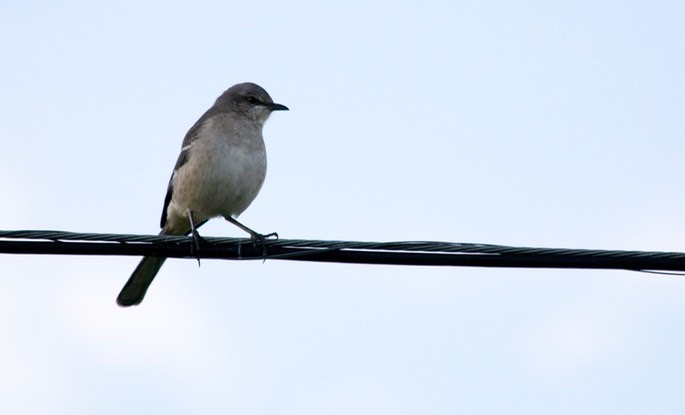Several times over the last five years or so I have travelled south from our home in New Mexico to Chihuahua, Mexico. Those sorts of trips were a big draw for our relocation to New Mexico, we thought about spending a lot of time in this beautiful part of the world, especially in the Sierra Madre Occidental and Sierra Madre Oriental. The craziness of the drug wars diminished our interest in the area but things have settled down a bit (as I write this on September 28, 2017) and we have been able to address our undiminished interest in the area.
Photographs from these trips are found at the Chihuahua Photos photo gallery.
I have made two videos from this area. The first (see below) is about the classic train trip through the Copper Canyon (Barrancas del Cobre).
On September 21, 2017 we left our home at 5:15 a.m. and headed to Palomas, Mexico to meet Luis Benavidez of the Pink Store. Luis has been the conduit for our trips into Chihuahua - and a good one. This was the start of another trip to Copper Canyon (Barrancas del Cobre), but not to travel the train this time. This time we were venturing to the bottom of the canyon. Friends joined family (my brother Mike joined Rebecca and I) for the outing and a good time was had by all. A video of the experience is shown below.
Our trip was only six days long so there was a lot of driving relative to time on the ground. Riding in a van is not the top of my list of favorite activities but the scenery was beautiful. We travelled south to Nuevo Casas Grandes where we ate lunch and then on to Cuauhtémoc, where we spent the night. Cuauhtémoc and the surrounding valley is the center of the Mexican Mennonites (like Nuevo Casas Grandes is the center for the Mexican Mormons). In Cuauhtémoc there is the occasional signage in German and the traditional Mennonite dress of many of the locals is a common sight. Driving along the roadways in this area one might think they were in a small city in Idaho. The highway is lined with high quality agricultural implement distributors.
As we headed south we stopped at one of the Terrazas’ Hacienda ruins. The Terrazas’ family owned more than seven million acres of Chihuahua before the revolution. Now most of the haciendas are in ruins and the land is owned by the people who work it. The ruins provide a great opportunity to study adobe architecture, including the use of dirt as an insulation material - and not just those thick adobe walls. Photographs of this hacienda have been added to the Chihuahua Photos photo gallery.
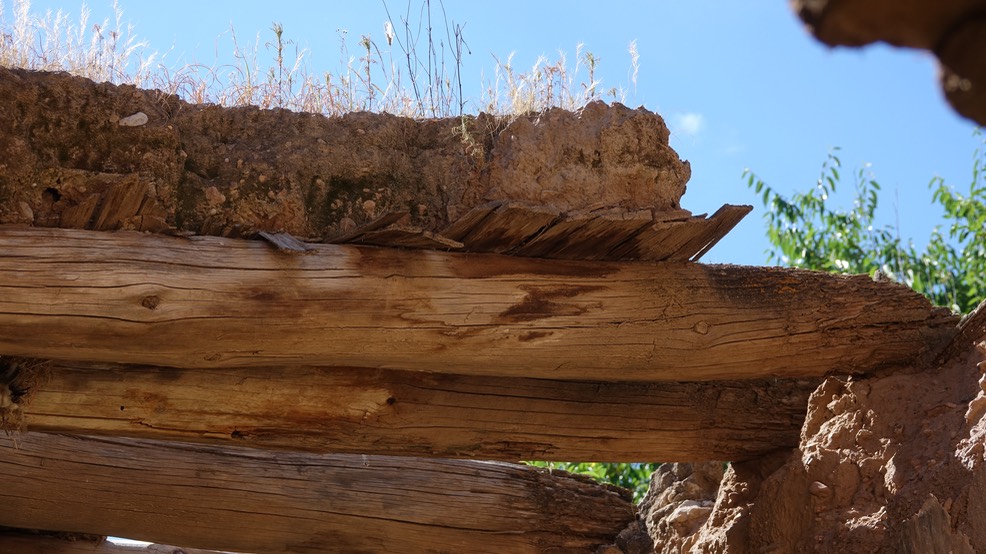
On the second day of the trip we stopped at Divisadero for lunch and fantastic views of the Canyon. The Barrancas del Cobre are often compared to the Grand Canyon in the United States. Arguments about which is the biggest, deepest, and most beautiful occupy many a discussion of well-healed travelers. Suffice it for me to say that they are both incredible - and different from each other, it is like comparing cats and dogs. Photographs from earlier trips to the Divisadero area can be found at the Chihuahua Photos photo gallery.
In mid-afternoon we stopped in Cerocahui to see the mission of San Francisco Javier de Cerocahui, photos below and at the Chihuahua Photos photo gallery. The original mission was founded in 1680. It was restored between 1939 and 1955. A photograph of the interior in 1937 is provided below so that the extent of the restoration can be assessed.
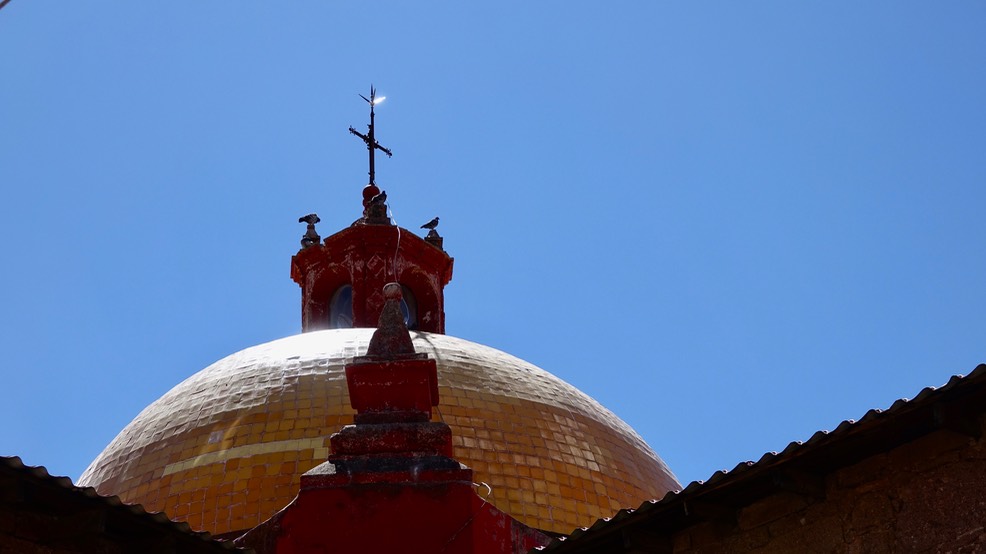
During our short visit only Barn Swallows and House Sparrows were to be found. From Cerocahui we travelled toward Urique which is at the bottom of one of the canyons of “Copper Canyon”. Along the way we stopped at the Gallego Overlook at the top of the canyon rim. Please see the Chihuahua Photos gallery for more photographs from the overlook.
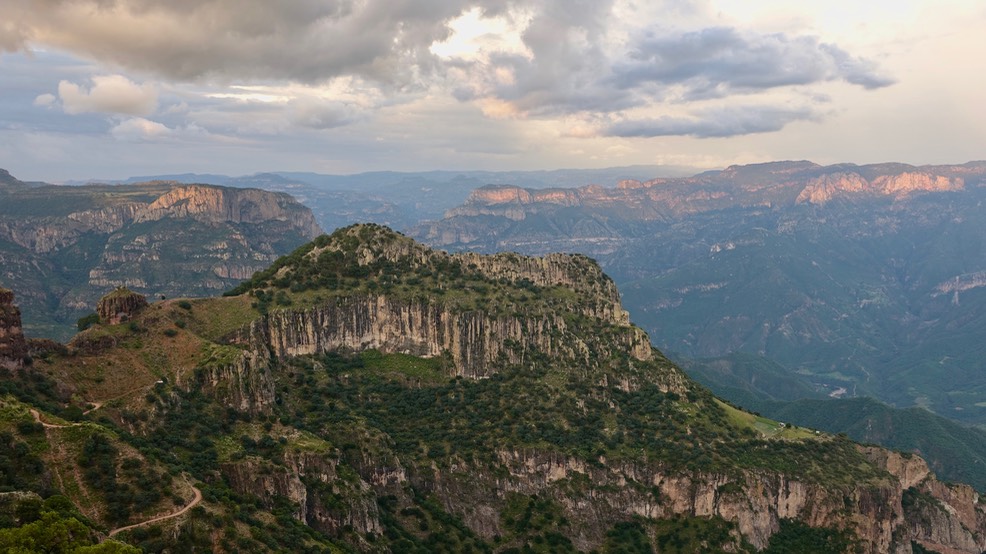
Urique is 4,300 feet below along the Urique River. This canyon, the Urique, is one of the 7 or 9 or… canyons which make up the Copper Canyon. It is reached by a narrow winding road, pictured below (lower left quadrant of the photograph).
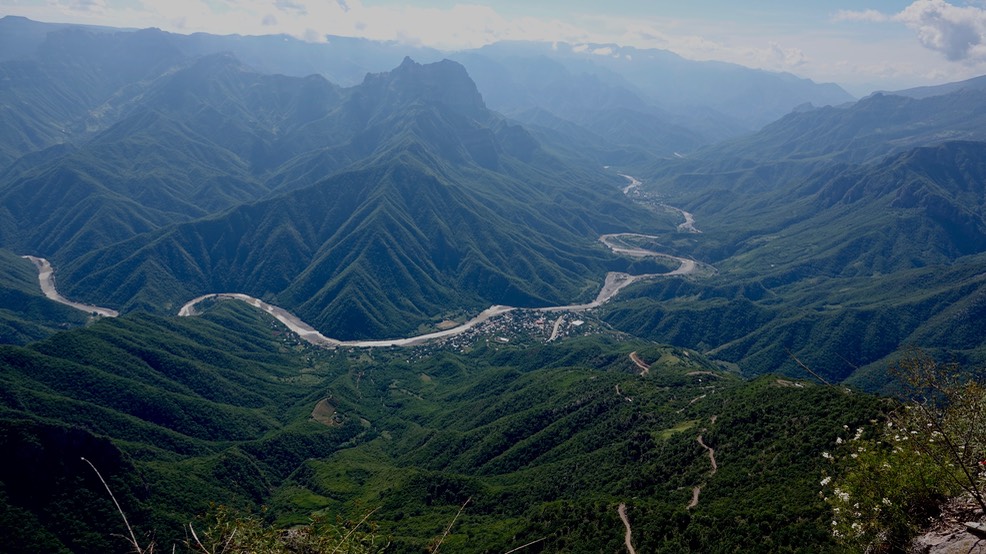
We spent two nights in the town of Urique. It has a population of about 1,000 and sits at an elevation of about 550 meters above sea level. (Do we have to change all of the elevations of the world because sea level is rising due to human induced climate change?).
Whereas the rim of Copper Canyon is covered in dense evergreen forests and can be decidedly cool (flowering plants like Salvia betulifolia are fairly abundant), the canyon floor can be decidedly tropical with humidity, temperature, and flora to match the coastal areas of this latitude. Pachycereus pecten-aboriginum (a columnar cactus) grows on the hillsides. A dodder - one of the parasitic plants of the genus Cuscuta was present in the fields along the river.
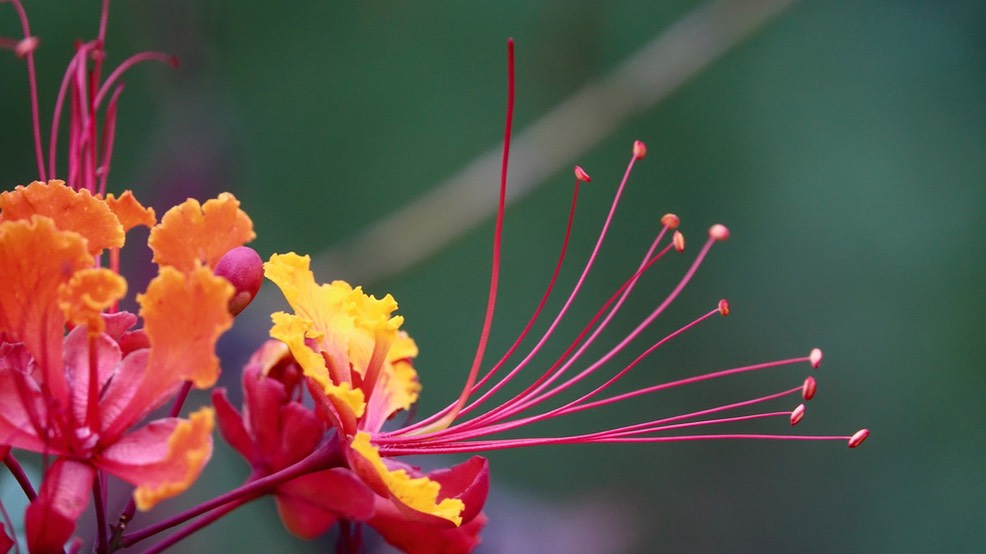
There was only one other tourist in town that we knew of, the people were friendly, the food was good.
This was not a birding trip but I did manage a bit of early morning effort the two days we were in Urique. The birding was best on the other side of the river from the town, near the football pitch. Foot bridges provide access to the other side of the river for man and beast. The Chihuahua Photos gallery has additional “footbridge” photos.
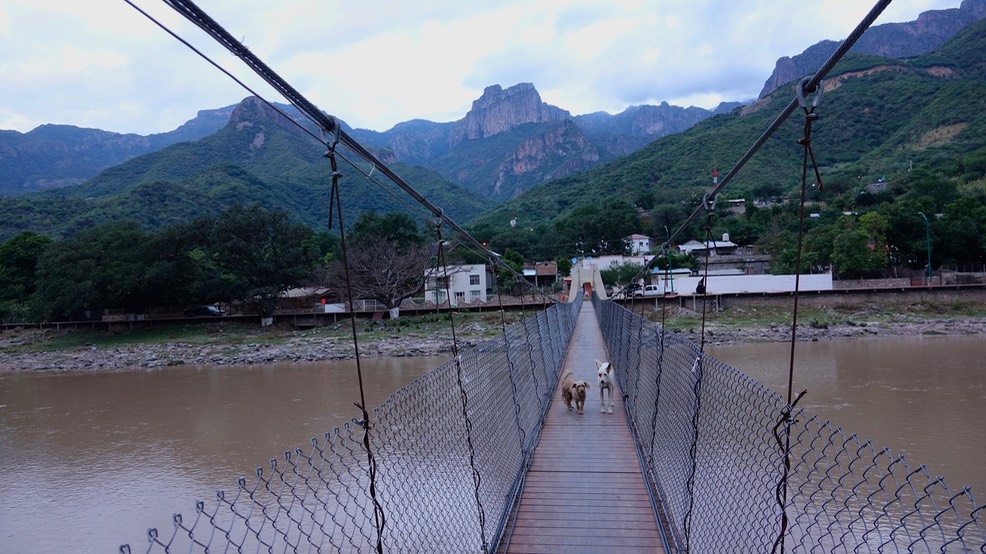
A mural for the local baseball team, a cement mixer, and a television satellite dish all used an abutment for one of the footbridges as a venue.
Once across the river, the trail skirts fields of corn and other crops - and pig and goat pens. This is an agricultural town, the main industries being cattle and various crops. Mining has always been a major factor in the economy of the Copper Canyon but at the moment no large mines are operating in the vicinity of Urique.
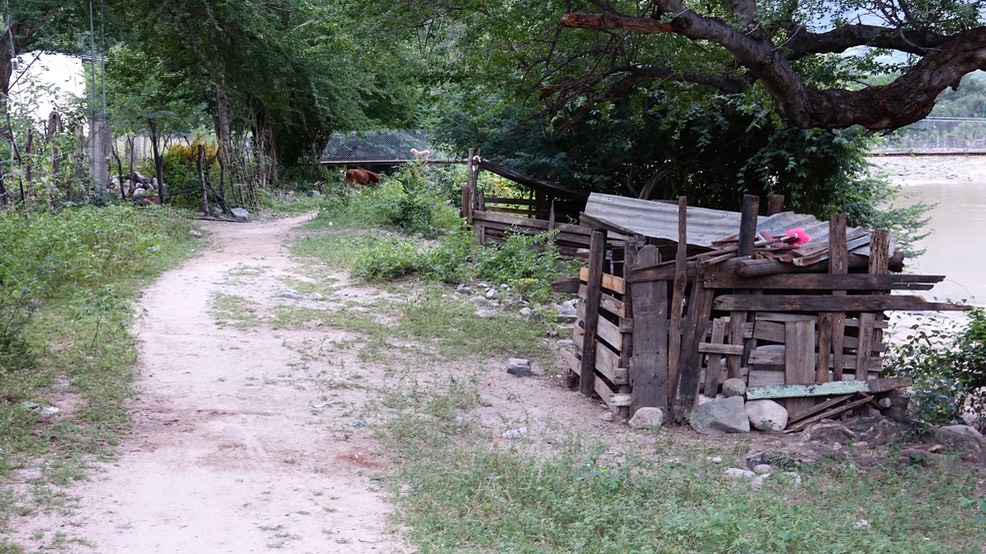
My birding activities tended to be along this trail before breakfast. I did not photograph many species but did manage some photos (follow links) of Great-tailed Grackle, Loggerhead Shrike, Streak-backed Oriole (photo below), Black Phoebe, Inca Dove, Gila Woodpecker, White-winged Dove, Vermilion Flycatcher, Spotted Sandpiper, Clay-colored Sparrow, Rufous-backed Thrush, Great Blue Heron, and Northern House Wren.
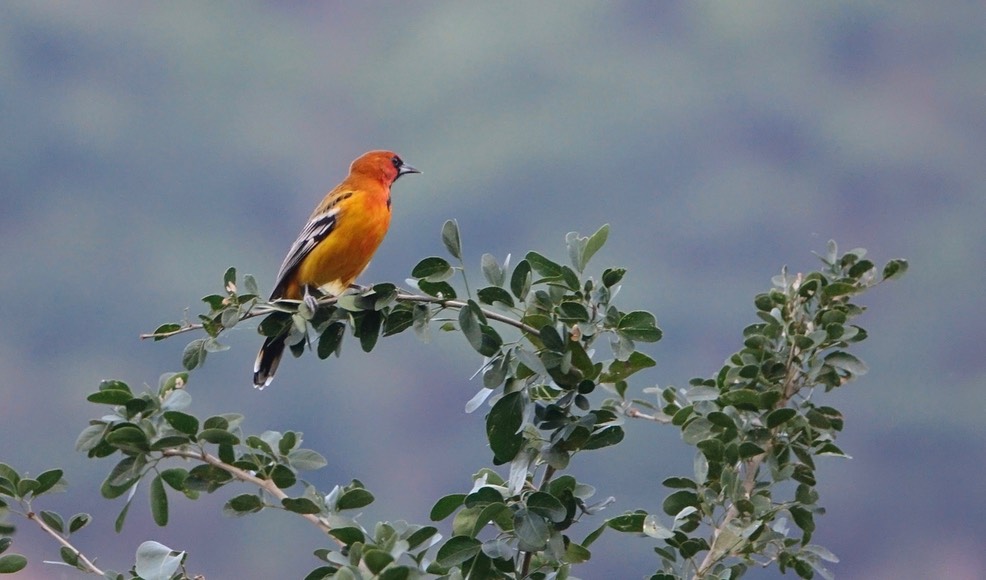
There were the typical range of insects, nearly all of which I was unable to identify to anything beyond “butterfly”, “ant”, etc. I did find this Silver Emperor, Doxocopa laure, by a stream, however.
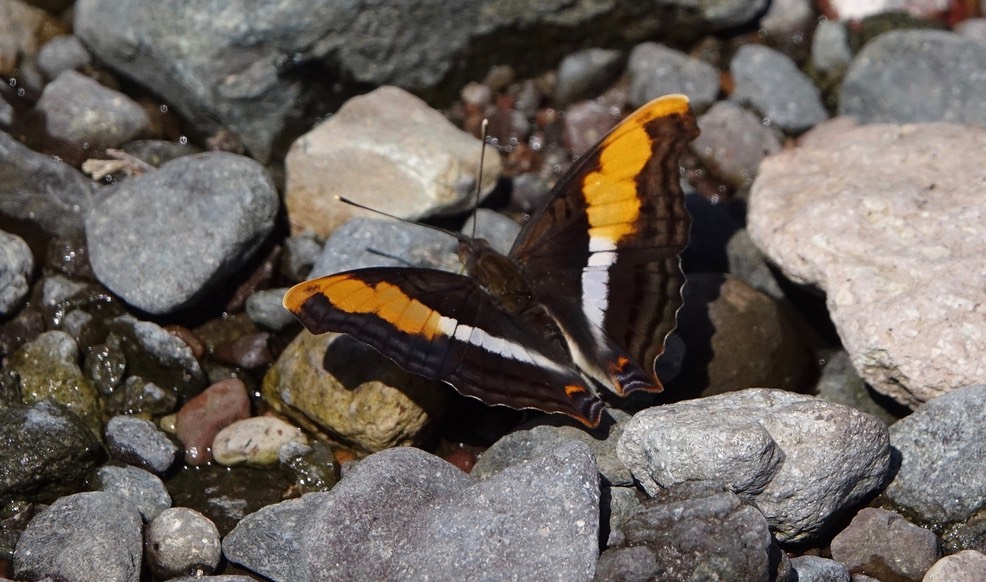
Leaving Urique we headed back up the mountain, stopped at Cerocahui for more views of the mission, and headed off to lunch at Divisadero. It was there that I photographed this Rivoli’s Hummingbird knowing full well that a few weeks before it had been a Magnificent Hummingbird. (The name change is the result of a formal split of the species by the AOU.) Somehow, Magnificent Hummingbird seems more fitting - if only in recognition of the fact that the heart rate of this species can reach 1,200 beats per minute.
We were on our way to Creel for the night, stopping first at the San Ignacio Mission (San Ignacio de Arareco) pictured below. In addition to the mission we were treated to brightly dressed kids and a Rock Wren. Other photographs of this site can be found at the Chihuahua Photos photo gallery.
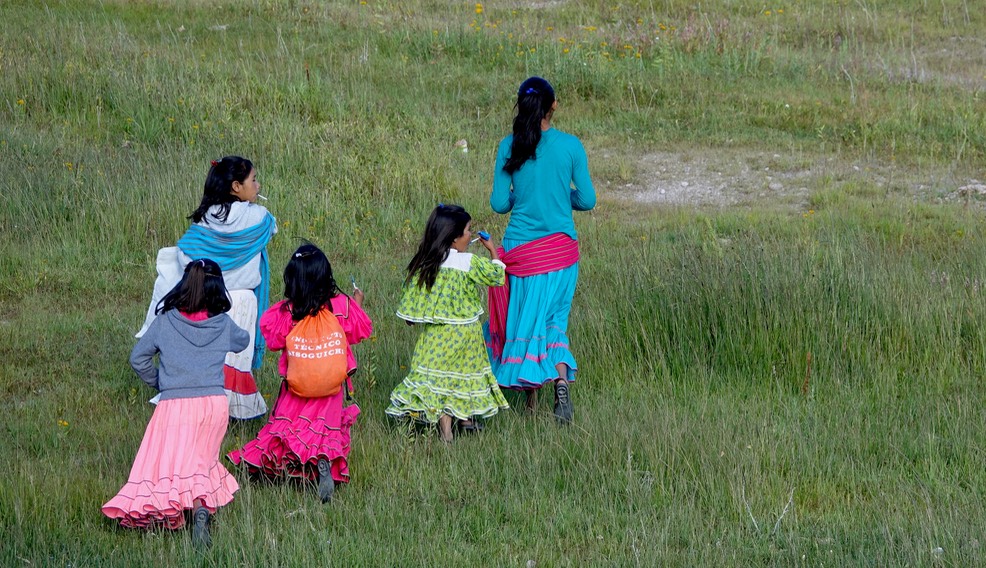
I have been to the mission several times, for instance, on September 12, 2015 I took a short trip from Creel to visit San Ignacio de Arareco and its mission. This small town is situated in a picturesque canyon with rock formations which are often photographed. The rock formations are the source of the canyons name, El Valle de los Hongos y de las Ranas (The Valley of the Mushrooms and the Frogs).
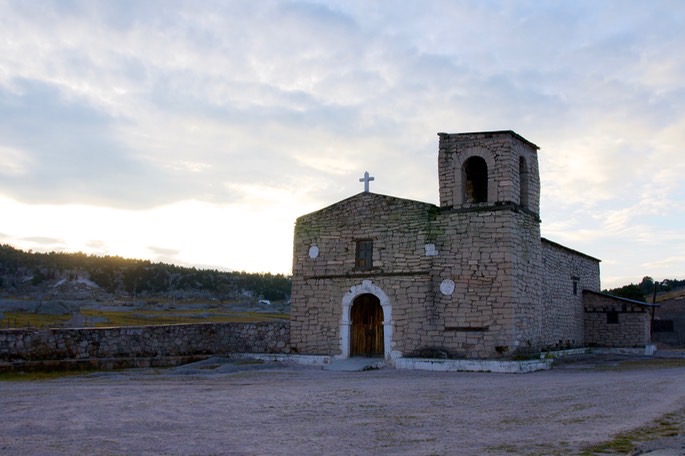
San Ignacio de Arareco, Chihuahua, Mexico
El Valle de los Hongos y de las Ranas
(Valley of the Mushrooms and Frogs) San Ignacio Mission
The Rarámuri homes are built of logs at this altitude (2,345 meters) and are generally surrounded by corn patches. No GMO-crap here, just traditional tasty corn. But it is not the village that tourists come to see, it is the mission which is built of faced stone (photographs above and below). Its rustic appearance and the beautifully austere setting are a welcome relief from the polish of today’s architecture.
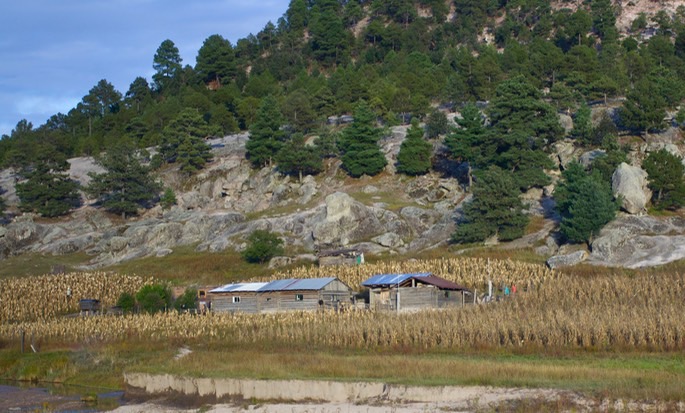
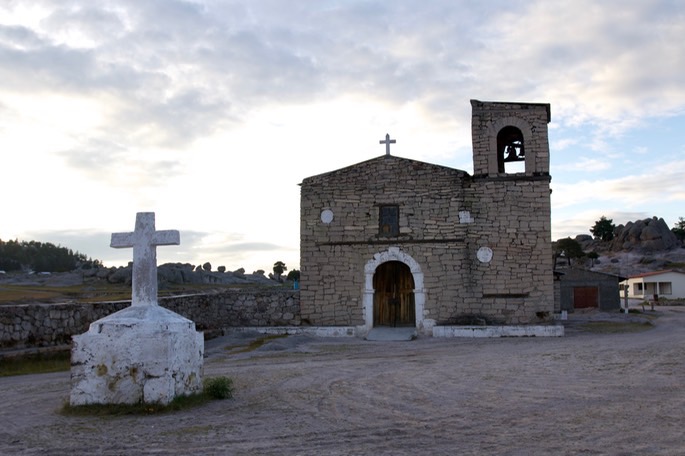
At last count, there were 58 people living in the village, the average level of education was the sixth grade, and there were no computers.... Some how, the stats of a demographic survey fail to paint the picture.
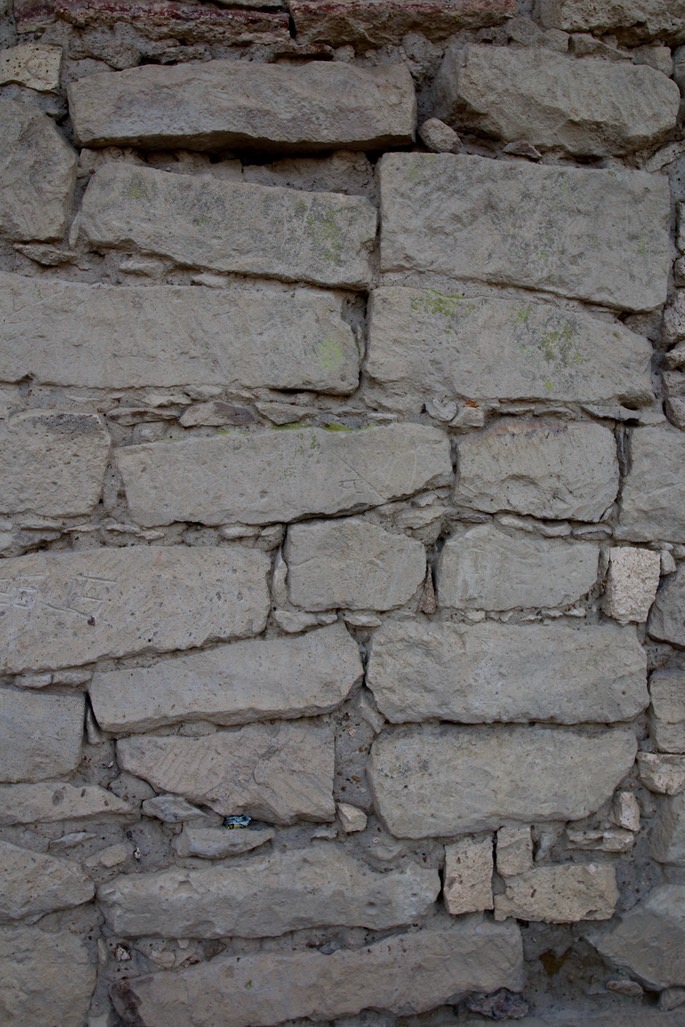
While I was photographing the mission a young boy approached me and offered to sell me a small basket for 25 pesos (a little less than $2 US). I bought the basket. A few moments later he approached Rebecca with some hand stitchery and offered it to her for 25 pesos, she wanted it, the smallest bill we had was a 50 pesos note. I offered it to him and asked for change. He claimed not to have any change. That brought a hail of laughter and false indignation, he relented, dug out the 25 pesos from my basket and sheepishly handed it over. All of this from a six or seven year old.
As we wandered around the mission two boys on horses showed up, word of the tourists spreads quickly in a small town. Conversations followed, the petting of horses followed, the mulling of what life is like in a town and setting like this followed.
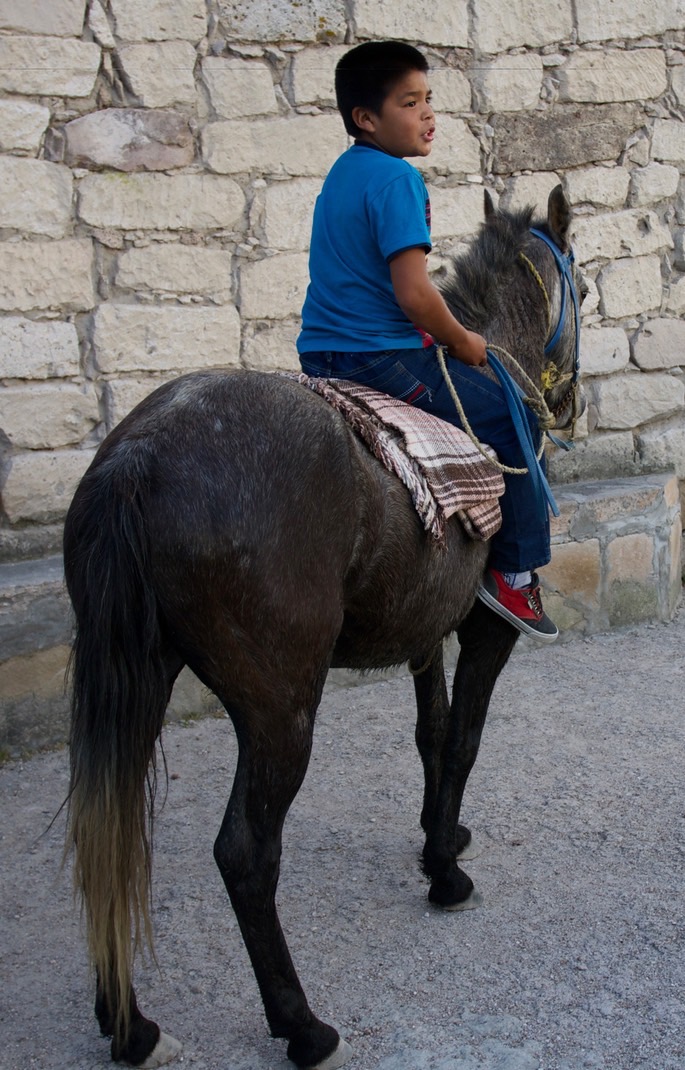
We traveled a short distance from the mission to see rock formations. It was here that the locals had set up their craft blankets, covered with items made of wood and plant fiber. Beautiful baskets and young people sitting patiently, waiting to see if the tourists would express any interest in their wares.
It was not the rock formations which drew my attention, nor was it the crafts for sale, it was the two young boys busy showing off - taking a run at a boulder, taking a flying leap, and performing various acrobatic feats. They joyfully put on a show for the old man with a camera.
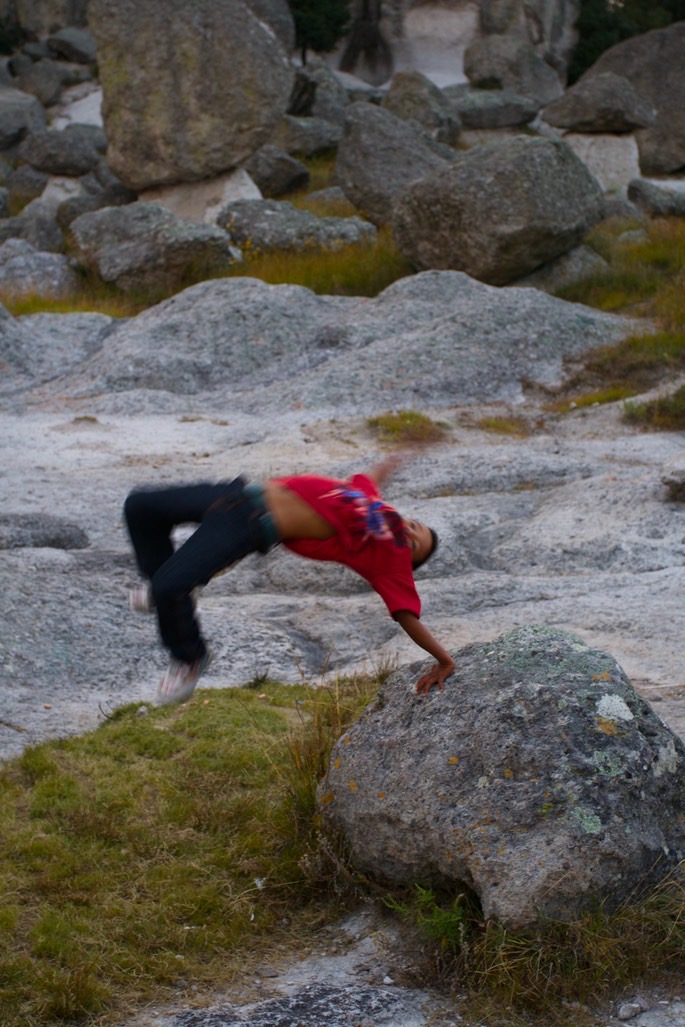
Our last major stop on our way home, in 2017, was at Basaseachic Falls in Parque Nacional Cascada de Basaseachic. At 807 feet it is the second highest waterfall in Mexico. Photo below and in the Chihuahua Photos gallery.
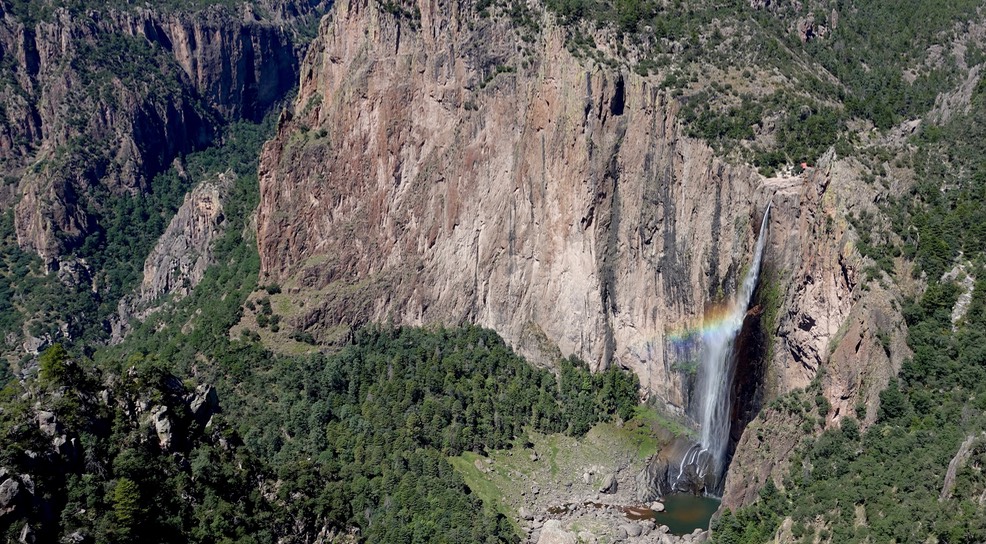
And with that our September 2017 trip to the Copper Canyon came to an end.
A RIDE ON EL CHEPE
Photographs of various bird species from this trip can be found in The Birds of Mexico photo gallery. A video of the trip is found at the top of this page (“El Chepe”) and the Chihuahua photo gallery contains photographs of general interest from this trip.
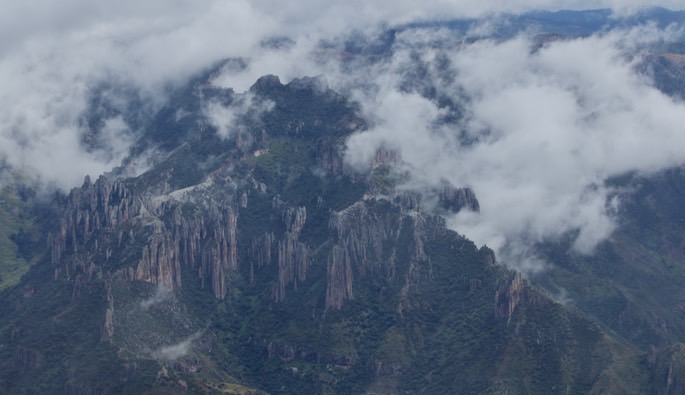
Copper Canyon Divisadero, Chihuahua, Mexico
On October 8, 2015, Rebecca, Mike, and I joined two others for a trip to Copper Canyon. Luis was the guide and another Pink Store employee accompanied us. I am impressed with the wonderful variety of experiences which we enjoyed on the trip. The Copper Canyon (Barrancas del Cobre) and the Copper Canyon train ride (El Chepe - Ferrocarril Chihuahua al Pacifico) are things which I have wanted to experience for a long time.
We arrived at the canyon just as a major weather system was leaving the area. In the morning clouds hung in the valleys of Copper Canyon (photo below), by afternoon the clouds had departed and the views were just as spectacular - but different.
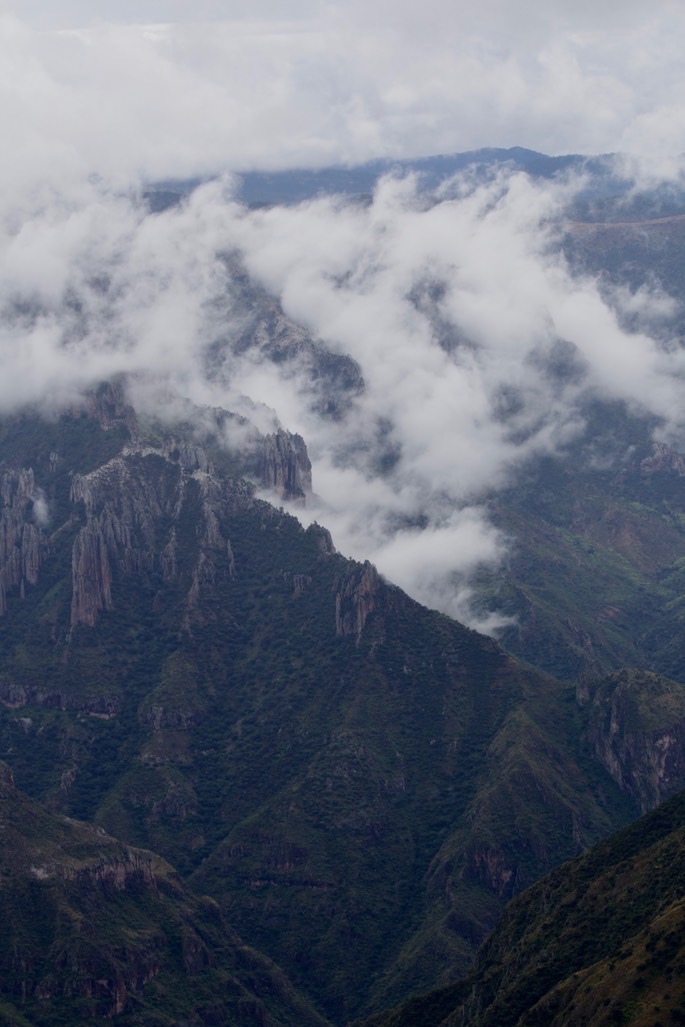
The morning of October 9 was rainy and overcast, a major weather front was in the process of departing the area but had not quite made it out of the highlands. By late morning I was looking down into the depths of Copper Canyon from the rim at Divisadero. The clouds hung heavy among the peaks in the canyon but by noon the rain had stopped.
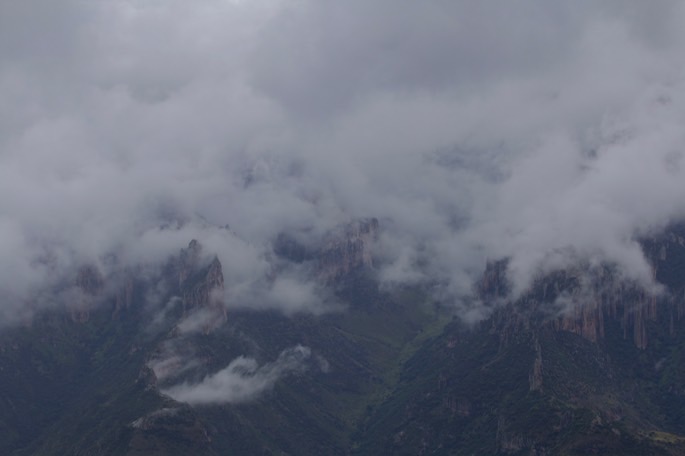
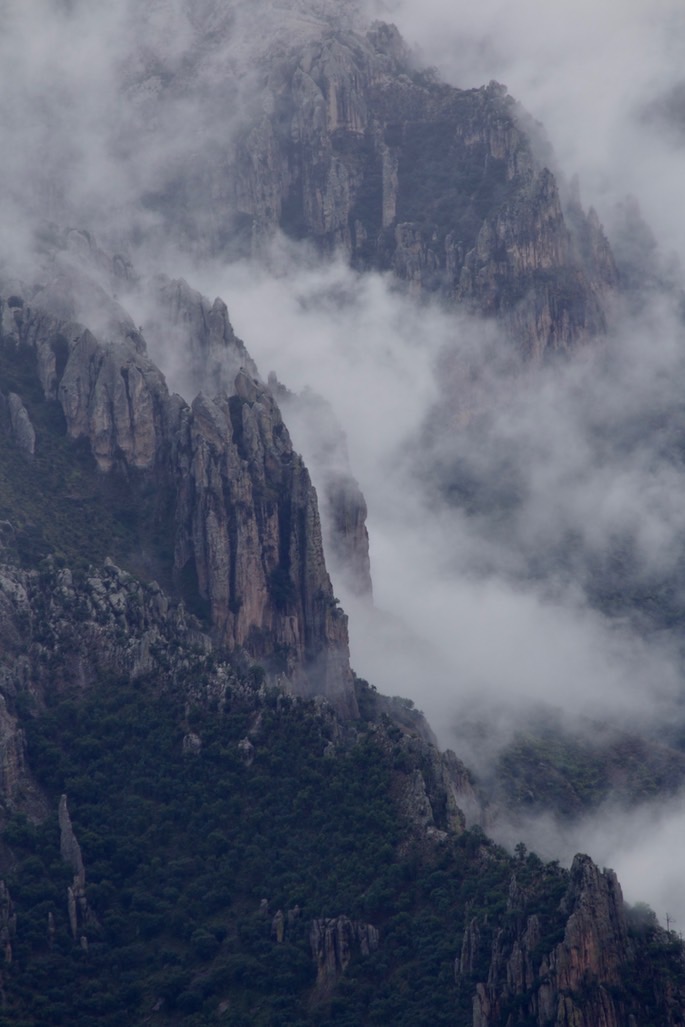
Having just spent time at the North Rim of the Grand Canyon in Arizona, USA, I was able to compare the two canyons based on recent experience. “Copper Canyon” is a complex of several large canyons, none of which is as large as the main stem of the Grand Canyon, they are, however, larger than the other canyons in the Grand Canyon complex. Copper Canyon is deeper than the Grand Canyon, it is also more vegetated. This last point is important because it creates an entirely different impression. The spires and spikes shown in the photo from Copper Canyon, above and below, have no counterpoint in the Grand Canyon, where the topography tends to be more mesa and big wall in composition. The two canyons are different enough that comparison of the two is not terribly productive.
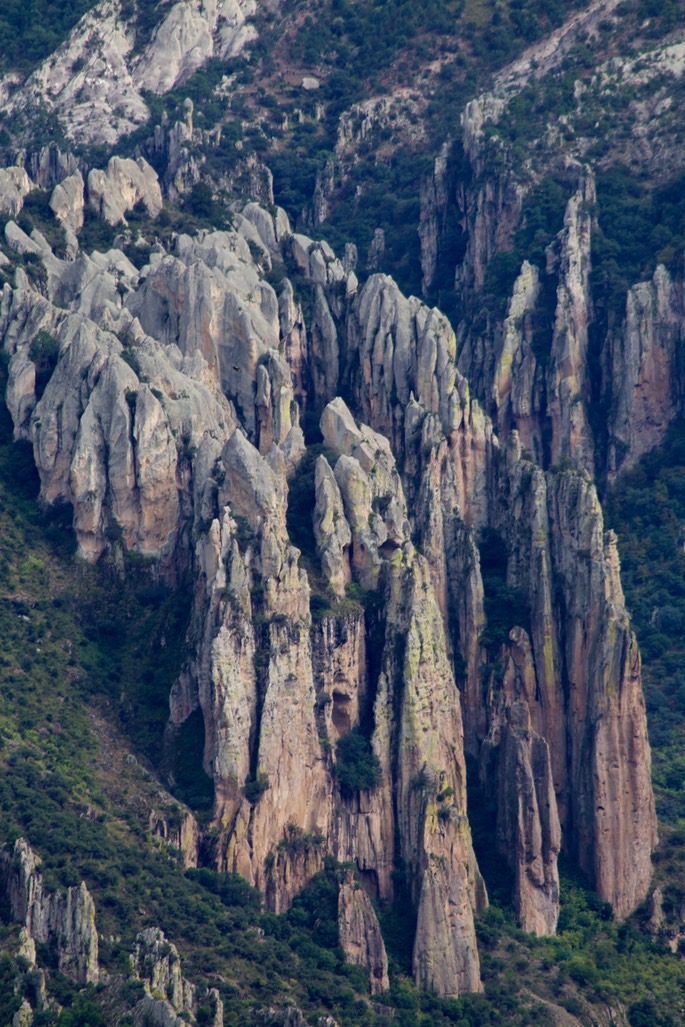
There is a tram which runs from the canyon rim at Divisadero out to a promontory in the canyon. Many Tarahumara (Rarámuri) - the indigenous peoples of this region - live in the canyon. The Rarámuri kids that can hike to the promontory (and it is a hike) can ride the tram for free on their way to and from school in Divisadero. We enjoyed a ride out to the promontory with a group of these kids on their way home from school (photo below). Video of the tram ride has been posted at Tram at Divisadero and to the Travel Videos Portfolio.
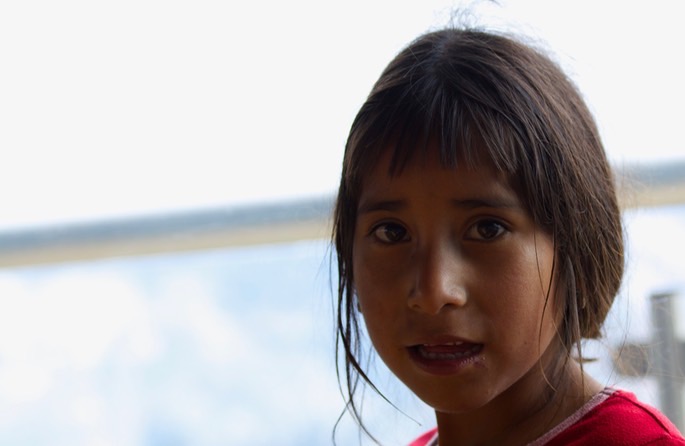
The single-span tram ride is 2.73 km long with a maximum height (car above ground) of 200 meters. The observation point has the tram terminus and a bathroom. It offers many vantage points to view farther into the canyon. There are, also, trail heads which come up from parts of the canyon. While we were there the clouds cleared completely allowing for majestic and beautiful views in low angle light. Low angle light because there was a problem with the tram and we were “stuck” at the observation point for over three hours. A wonderful opportunity to watching the changing light and worry, a bit, about the tram.
While my brother, Mike, and I were taking photographs we heard the screams of glee as two guys came down the 8,350 feet long zip line from the rim (a ride which is purported to reach speeds of 84 mph). I joked to Mike that it was the engineers coming to fix the tram. We had a good laugh at that idea and even a more hearty laugh when we found that it was the truth, they had no other way to get down to us - other than a six hour walk which would have taken them into the night.
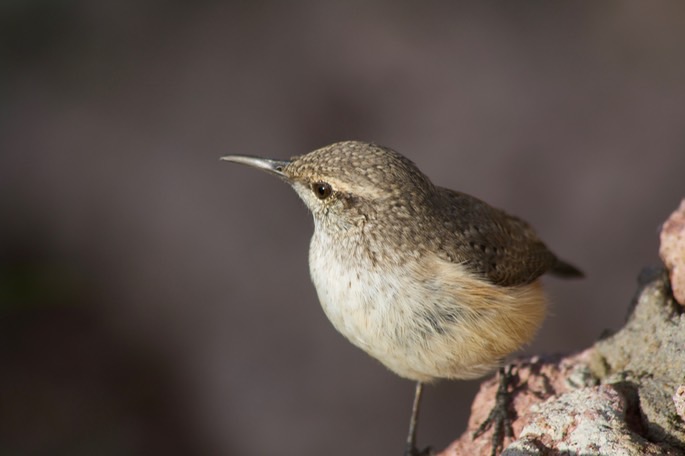
Our time at the observation point gave me time to photograph Rock Wren, Salpinctes o. obsoletus (photo above), Red-tailed Hawk, and Turkey Vulture (photo below).
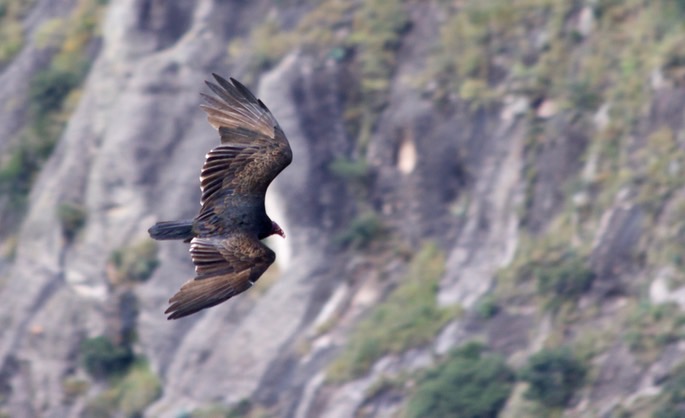
Whenever I bird the tropics I am always looking for a vantage spot, a place where I can look into the canopy. At Divisadero the same advantage is gained by standing on the rim of the Copper Canyon or at the edge of some promontory in the canyon. For instance, the Turkey Vultures, Cathartes aura, were floating by at eye level at the tram terminus.
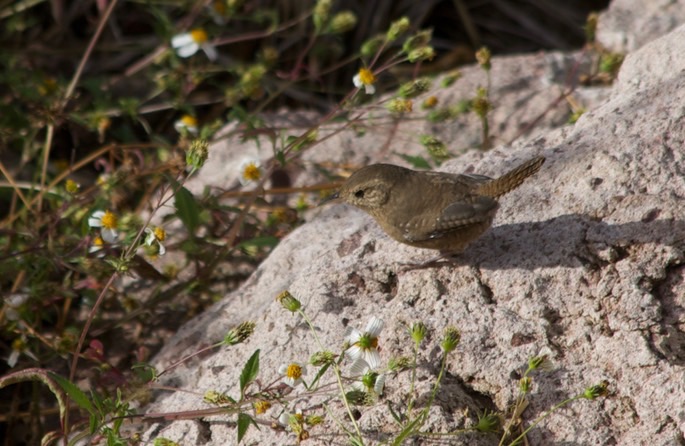
I had a chance to study a bit of taxonomy controversy at the edge of the promontory mentioned above. If you are a lumper, the bird picture above is a Northern House Wren (Troglodytes aedon parkmani). If you are a splitter it is a Brown-throated Wren (Troglodytes brunneicollis compositus). At the same location there was a Rufous-crowned Sparrow, Aimophila ruficeps, a bird which I have not seen in New Mexico, although it is possible near our home in Hillsboro (photo below).
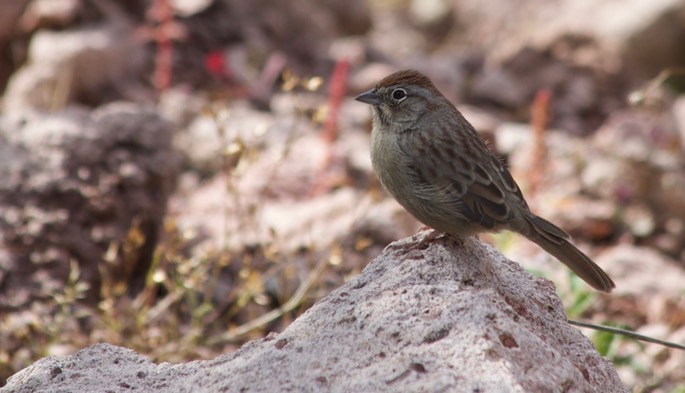
The Rock Squirrel, Spermophilus variegatus rupestris, pictured below is a different subspecies from that which is found in the area where I live (S. v. grammurus). I had a chance to watch and photograph it for quite awhile during the time we were waiting for the tram to be repaired at Divisadero.
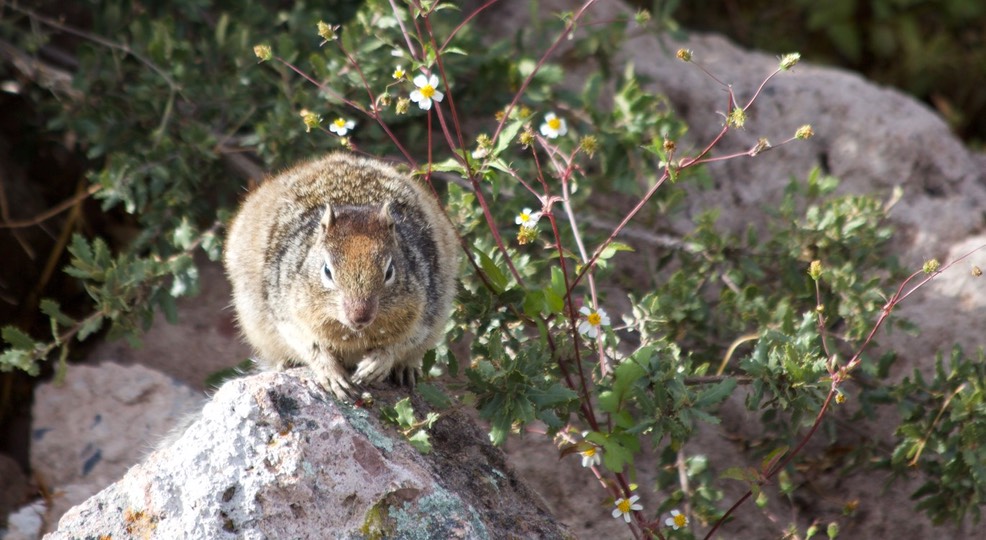
The Maycoba Sage, Salvia betuifolia, which I photographed (below) along the cliffs near where I saw the Rock Squirrel is closely related to the Salvia which I photographed in Big Bend National Park (Texas, USA) last year (Salvia regla - Mountain Sage).
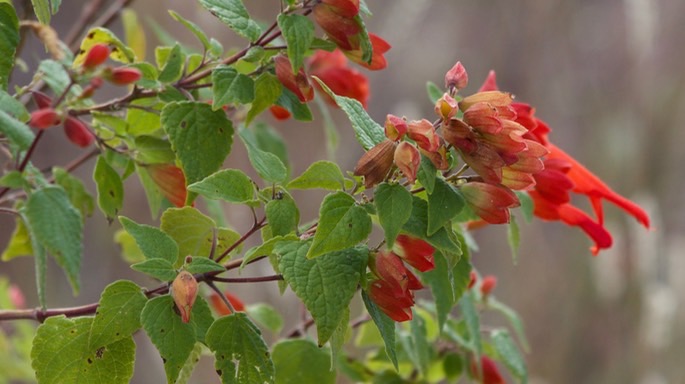
I have a “Signs” photo gallery in which I post photographs of road signs, it is not an art gallery, more a gallery of the wonders of a road trip. There were few signs in Copper Canyon, as opposed to the communities on the rim, but the ones that were in the canyon told interesting stories. The signs shown here were at the observation site at the end of the tram ride.
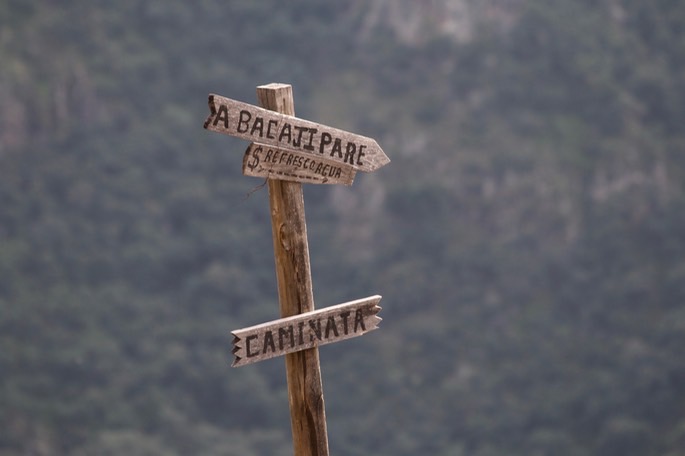
This sign was at the junction of several trail heads near the end of the tram. Each of the trails led deeper into the canyon and as far as I could tell each of the trails was used by the school kids who rode the tram down to the observation site on their way home from school. Anticipating hikers, the top sign advertises refreshing water for sale at a small village site in the canyon.
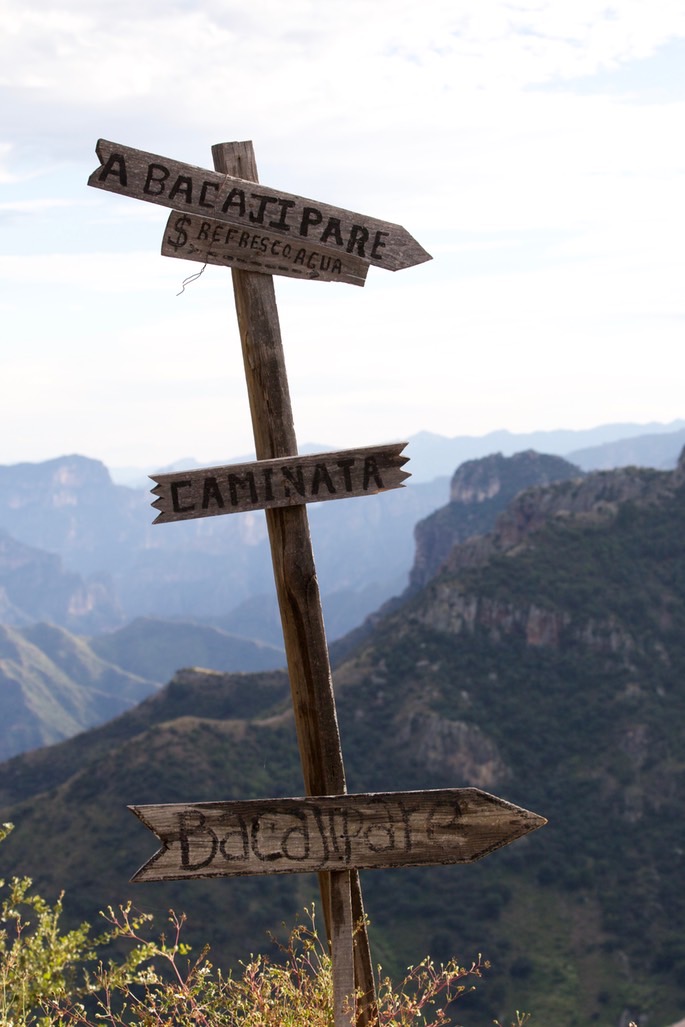
In the photograph below, taken with a very long telephoto lens, the school kids meet up with some adults on their way back home.
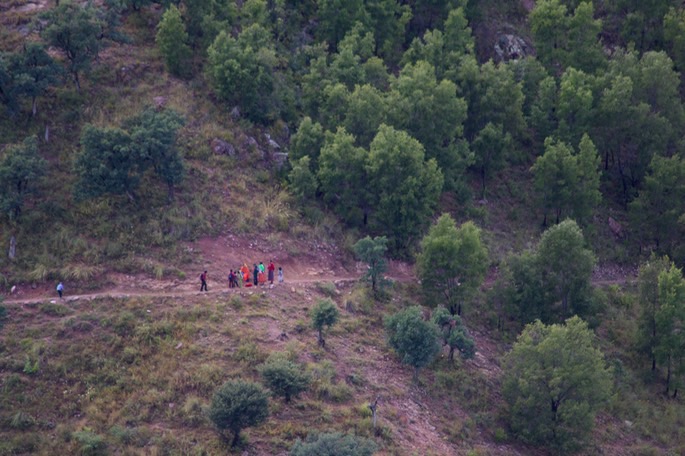
At the observation site there was a plaque which provided translations of Rarámuri words into Spanish (photo below). Rarámuri is typically the first language of the people here, Spanish quickly follows.
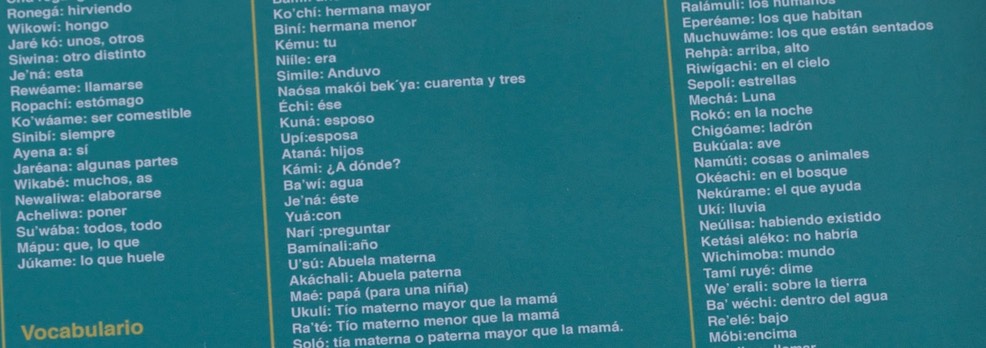
There is always someone who is going to walk off of a cliff and always someone who wants to put up a sign saying “don’t walk off the cliff”. There were excellent views beyond this sign.
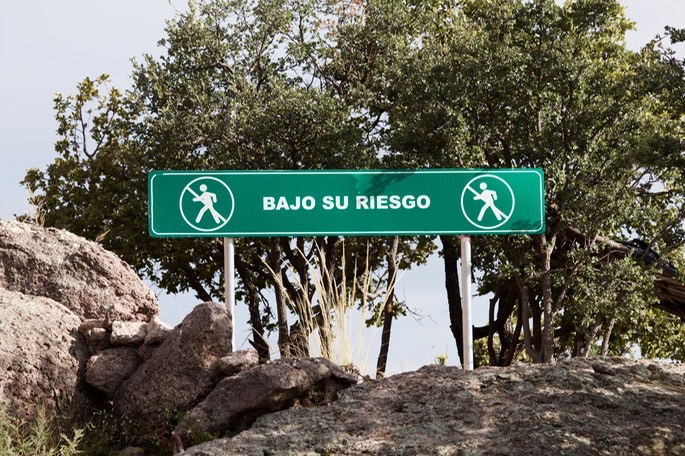
Perhaps not least, there was the sign within the tram car - and in particular the red button with the yellow fringe, the one which made obnoxious sounds and flashed a lot, telling us to stay put until the tram was fixed.
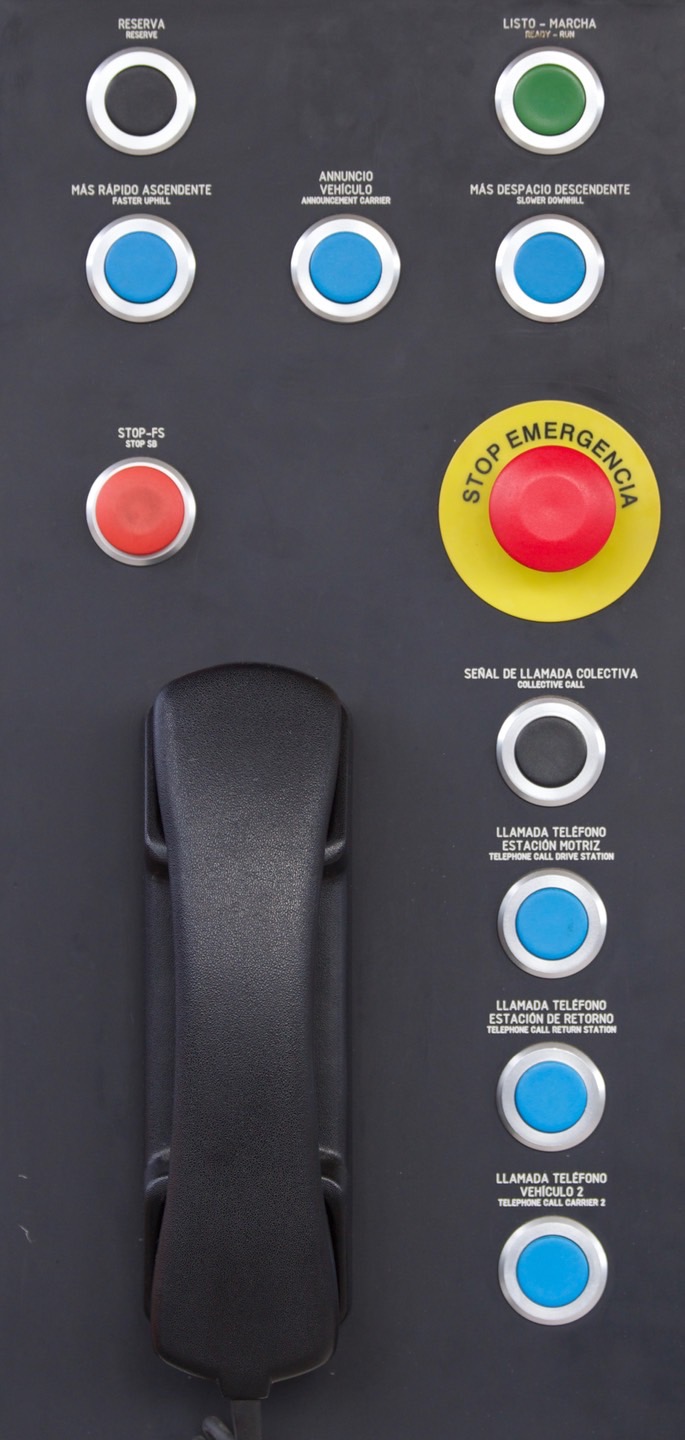
As dusk reached us the tram was fixed, at least good enough for one more trip, and we were back to the rim. While I was walking along the railroad tracks I found a Yellow-eyed Junco (Mexican Junco group), Junco p. phaeonotus (photo below).
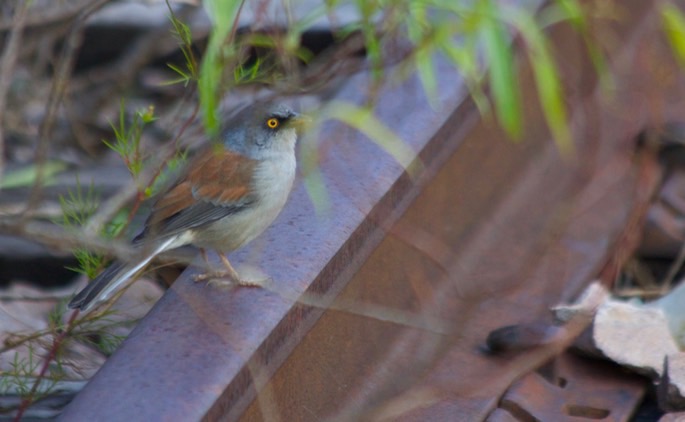
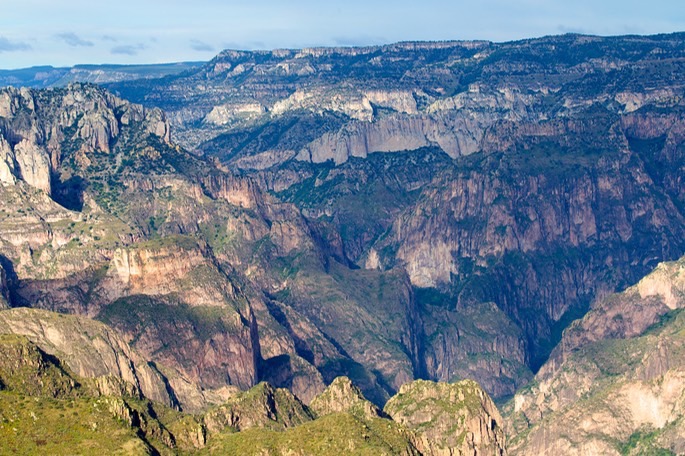
I had a chance to bird along the rim of Copper Canyon near the Posada Barrancas train stop near Divisadero on October 10. That effort yielded the Hutton’s Vireo pictured below, an as yet unidentified sparrow, Curve-billed Thrasher, and Acorn Woodpecker (photo below).
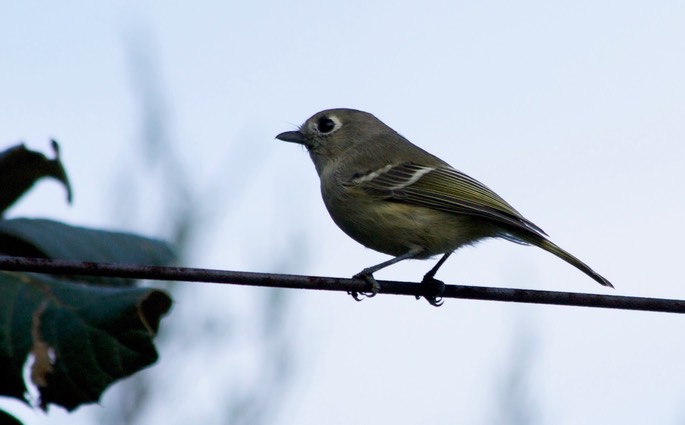
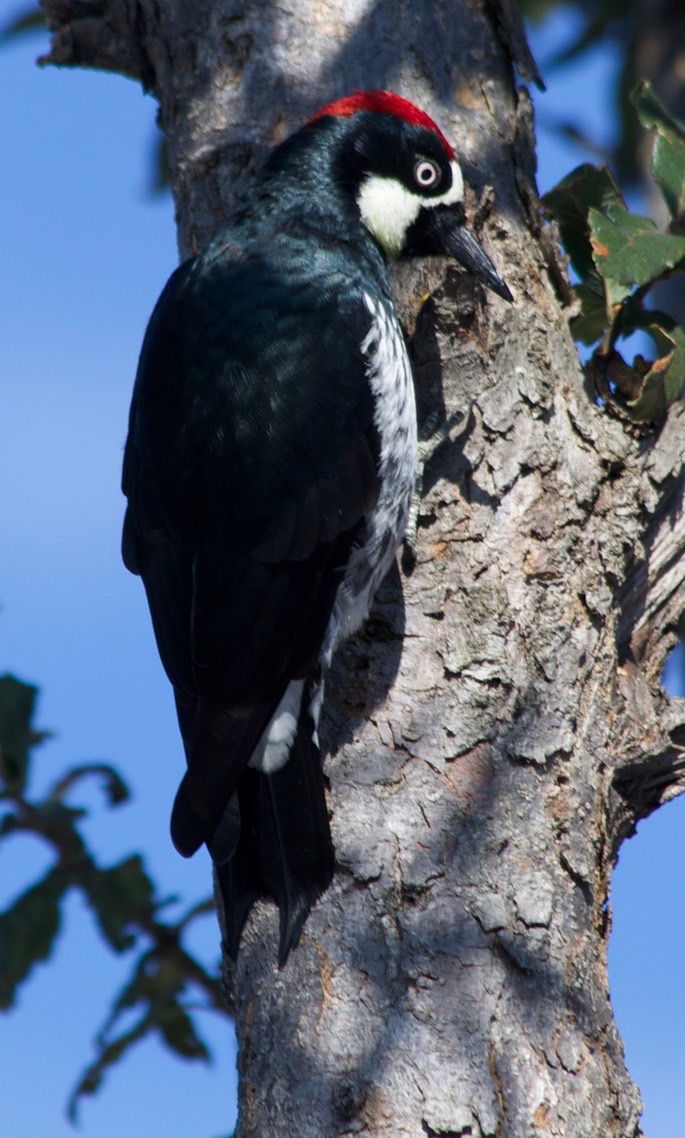
On October 10 and October 12, I rode the train. Specifically, I rode the Ferrocarril Chihuahua al Pacifico (Chihuahua-Pacific Railway), also known as El Chepe (after its reporting mark CHP). We boarded the train in Divisadero and rode it to El Fuerte on October 10 and made the return trip on October 12.
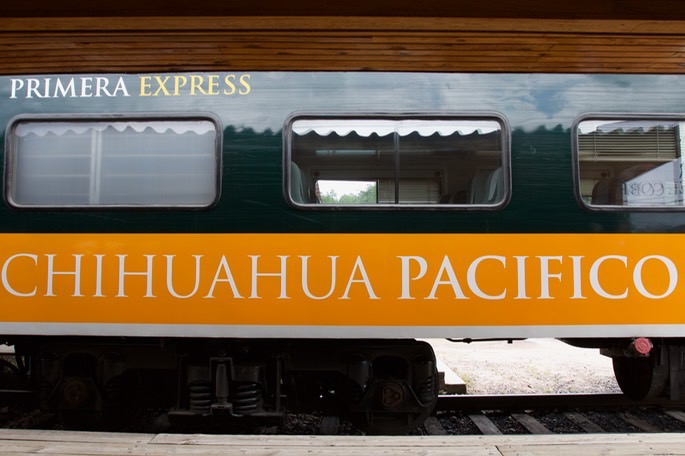
The El Chepe rail line runs between Chihuahua and Los Mochis (on the Sea of Cortez). At Divisadero the elevation is about 7,900 feet, at El Fuerte it is about 400 feet. In clothing terms, you travel from a light jacket to a t-shirt. It takes roughly seven hours to travel between Divisadero and El Fuerte.
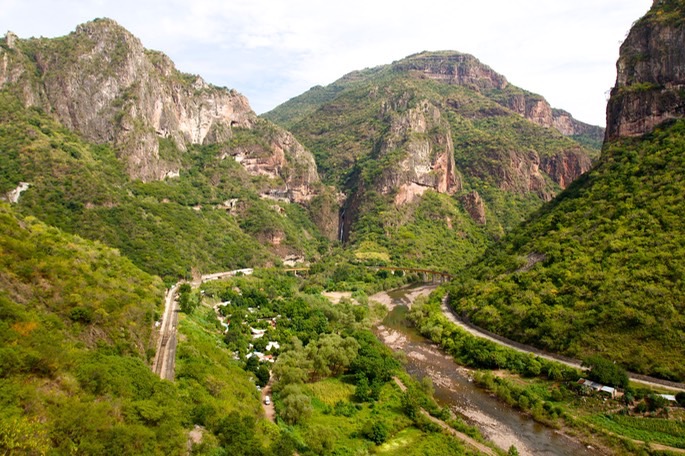
The train passes through more than fifty tunnels and over roughly thirty bridges in the rail segment which we travelled over. In many locations the track makes a giant “u-turn” in a canyon, at one location the rail line loops over itself, some of those turns are in tunnels, in one tunnel the train makes a 180 degree turn, in the tunnel. When not in tunnels, the scenery is dramatic.
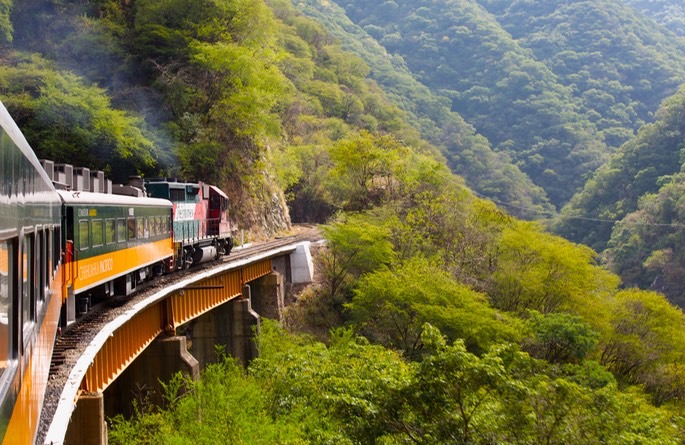
We entered the state of Sinaola as we exited the canyon. I continue my description of this trip here (even though it was in Sinaloa) because to do otherwise would be rather disjointed.
In the lowlands near El Fuerte we saw fields with crops stacked for drying. I could not figure out what the crop might be given the size and nature of the stacks (photo below). Turns out, it was sesame. Sesame is not grown commercially in the United States (at least not in a significant way). India is the top sesame producer in the world, in this area of Mexico sesame production is equivalent to about 5% of the Indian production.
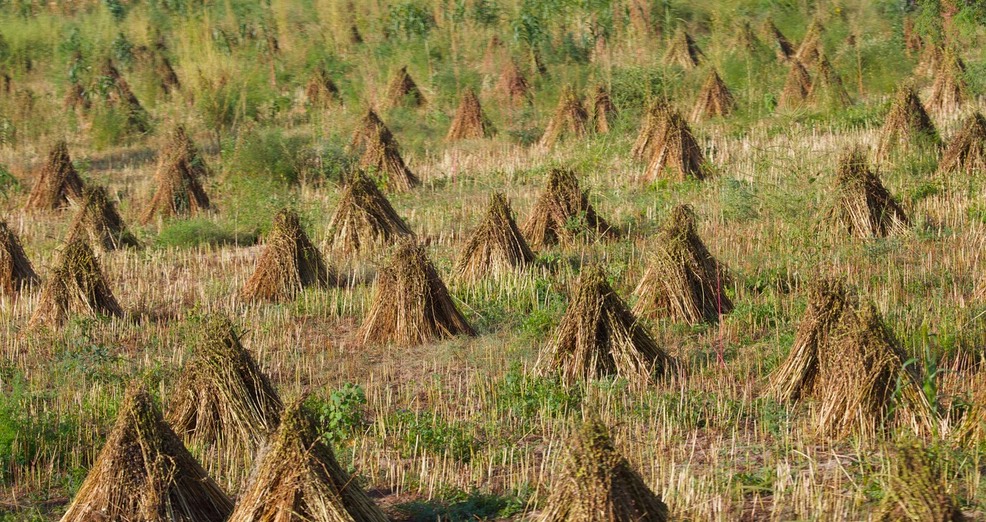
Our ride on El Chepe took us to the lowlands, to El Fuerte which was founded in 1563. It is a small city (pop. about 13,000) and quite beautiful. Many tourists will head to the local church when visiting a Mexican town or city, they think that is where all the art will be - and there is often art to be had at such places.
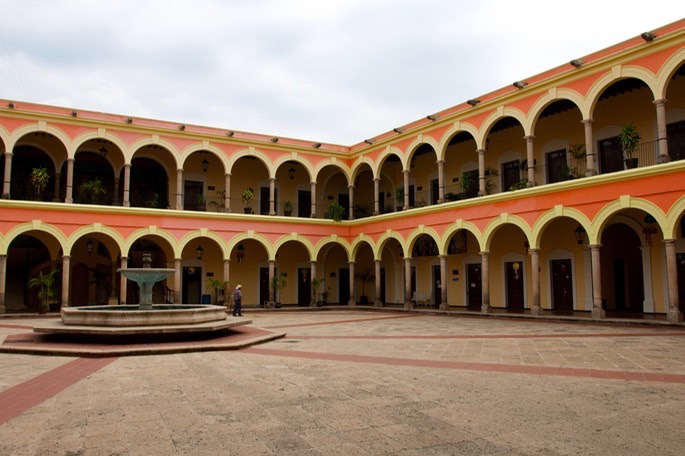
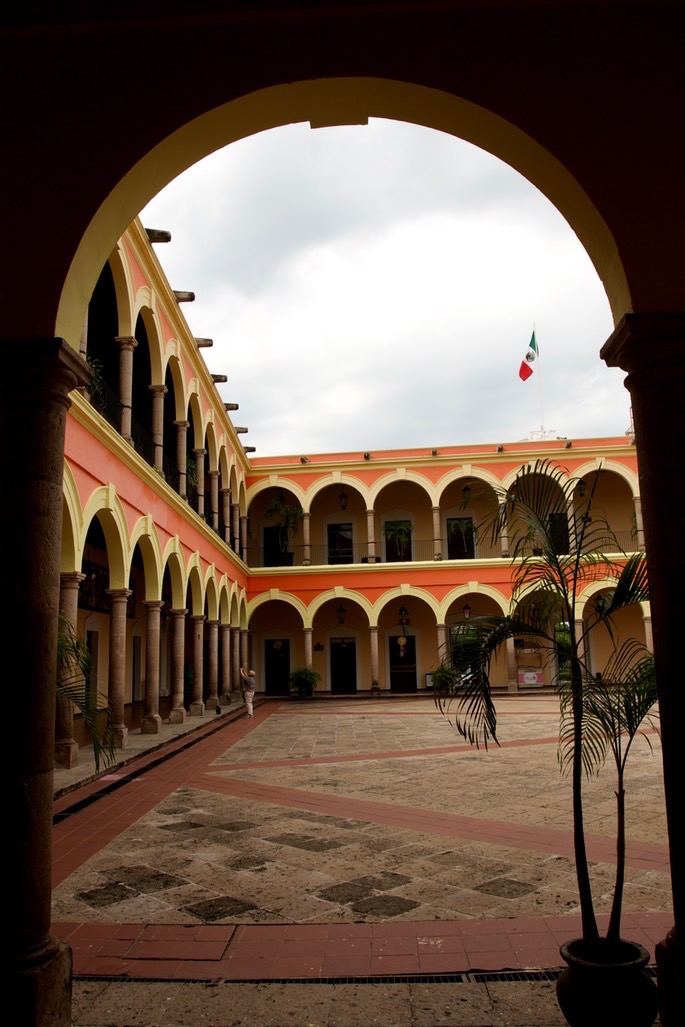
Two other locales are dependable for art in Mexico, municipal buildings and the plaza(s). And, in general, the municipal buildings are wonderful examples of Mexican architecture. The photos, above, are from the municipal building in El Fuerte, Sinaloa, Mexico. This style of architecture, two stories, arch arcades sheltering the entries to various offices, and a large open area are typical of that found in small to moderate sized cities. There will generally be a central stairway to the second story and in the stairway alcove there will almost always be murals, see photo below. The themes of the murals are pretty consistent - noble pre-columbian civilizations, some priests and peasants, and the revolution(s).
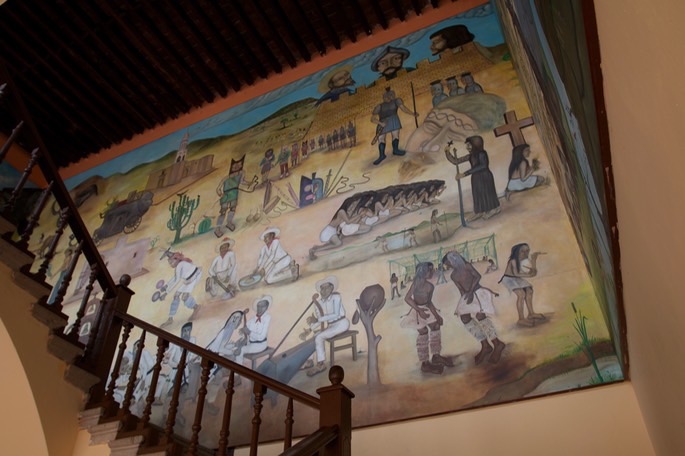
As is typical of most municipal buildings in Mexico there are murals, usually telling the history of the place. In this case, that history includes the Yaqui Indians.
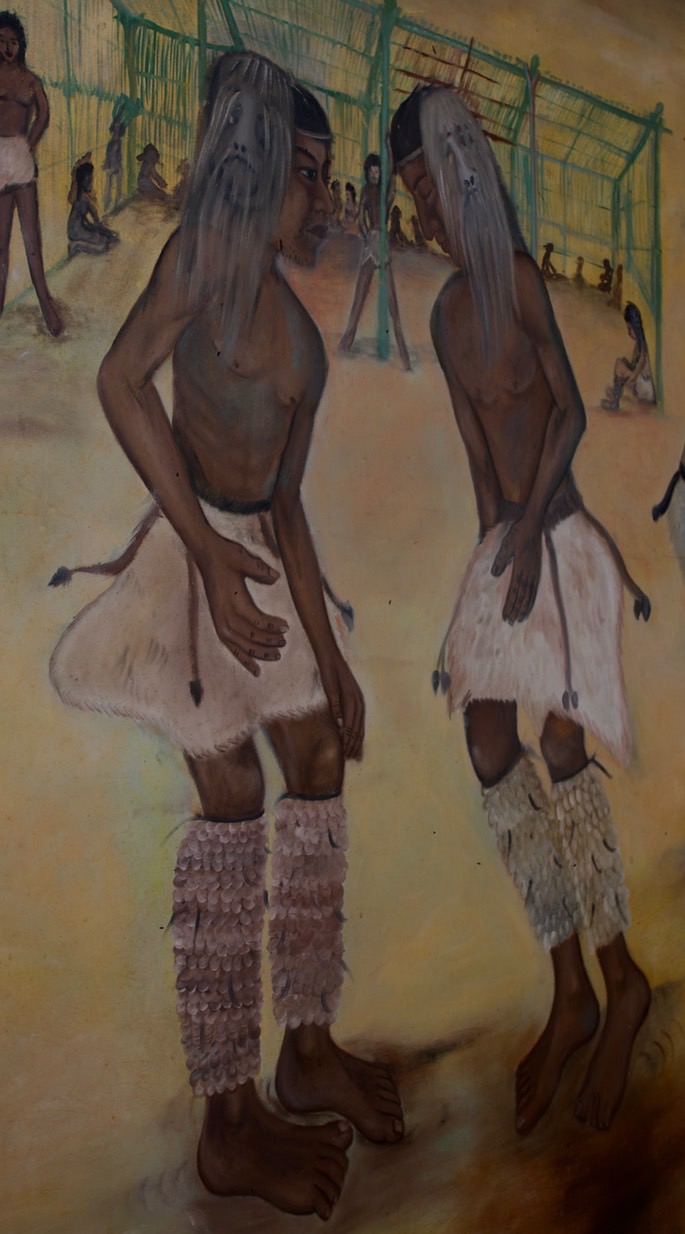
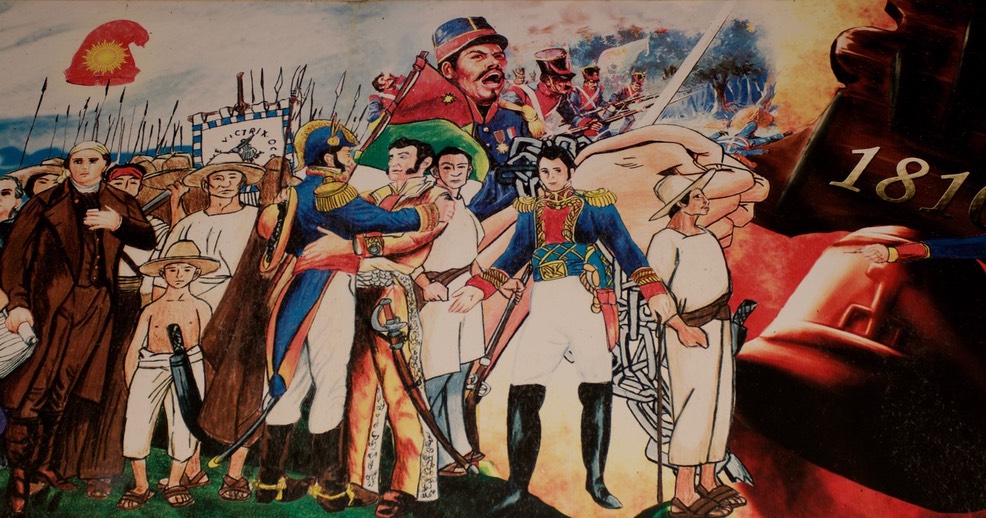
There is a museum with several rooms in the old fort. The ramparts of the fort offer nice views of the town and the Rio Fuerte. There is also a church with steeple. That is about it for tourist attractions.
The ambiance of the place is very nice, it has a comfortable small town feel to it which relaxes the soul. The tropical setting, the differences in architectural style, the dress of the people remind you that you are not in the United States. Palm and papaya trees certainly reinforce that fact.
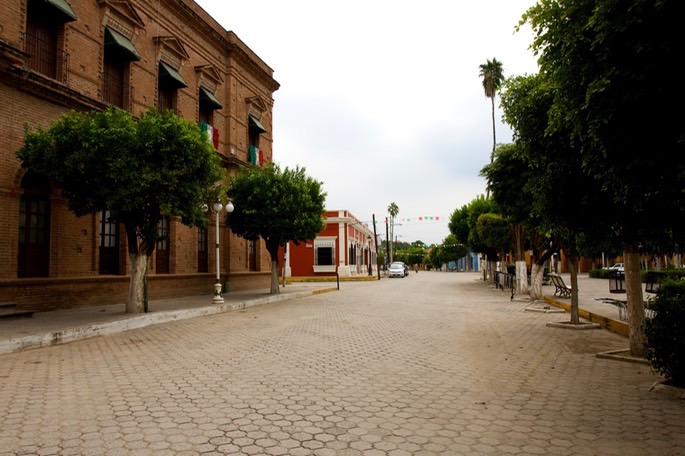
Photographs of the municipal building in El Fuerte, its murals, and details from the murals have been posted to the Mexico - Sinaloa photo gallery as were photographs from the museums in El Fuerte.
While in El Fuerte we stayed at the Posada del Hidalgo which is a complex of three old haciendas melded together quite nicely. The hotel has a one room museum which is rather interesting as well. The lobby area of the hotel has several hummingbird feeders. It is easy to photograph hummingbirds (a Violet-crowned Hummingbirds are shown below).
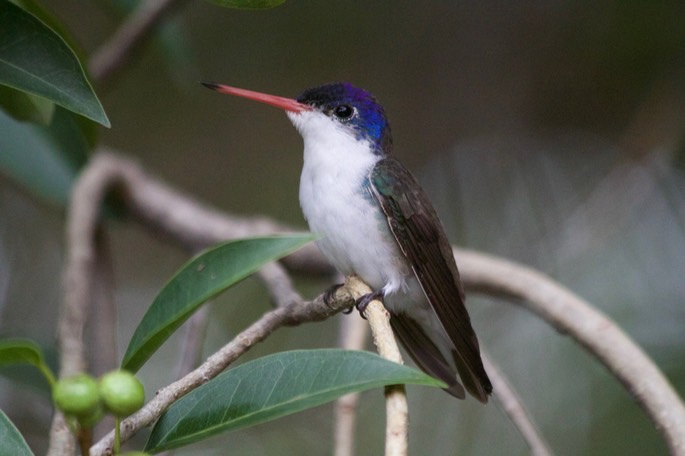
There were two very common hummingbirds in El Fuerte, the Broad-billed Hummingbird and the Violet-crowned Hummingbird, Amazilia violiceps. I have very little experience with the latter species so being able to spend time with it on October 10, 11, and 12 was a real treat. My previous experience with this species was limited to the Guadalupe Canyon of southeastern Arizona/southwestern New Mexico, USA, just about as far north as its range extends. This species is found as far south as the very northern part of Oaxaca, but only on the Pacific side of the mountains.
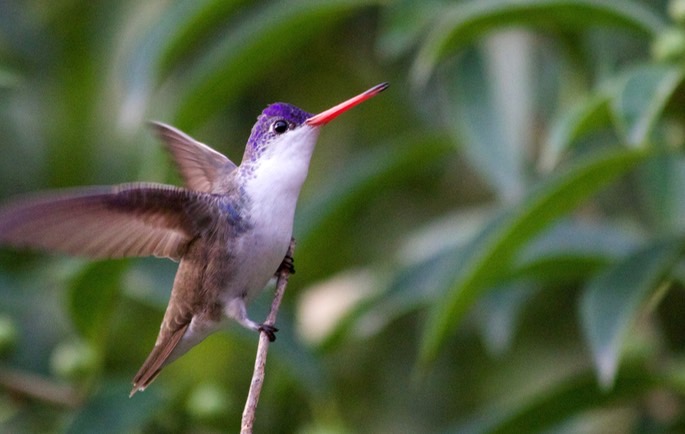
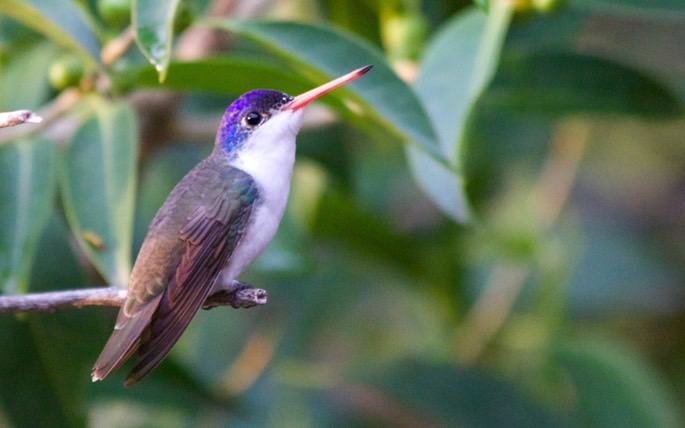
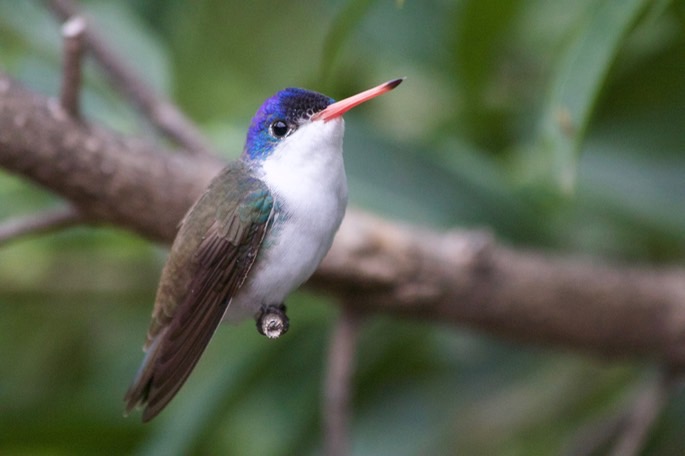
We don’t tend to think of hummingbirds and red bills in the same thought, but in Mexico there are several red-billed hummingbird species, the Violet-crowned being one. The markings of this species are simple but brilliant.
The first time I saw this species I was imitating the call of one of the small owls at what might be an owl hole when two things happened. The owl peaked out of the hole and a Violet-crowned Hummingbird immediately appeared to keep it in line. One of those surreal moments which remains imprinted in my brain.
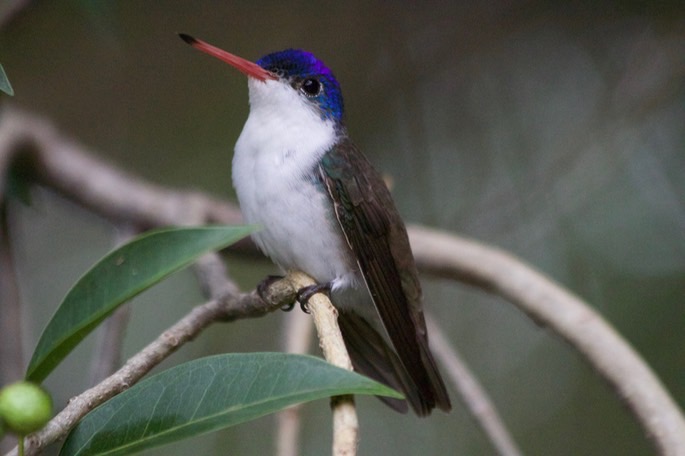
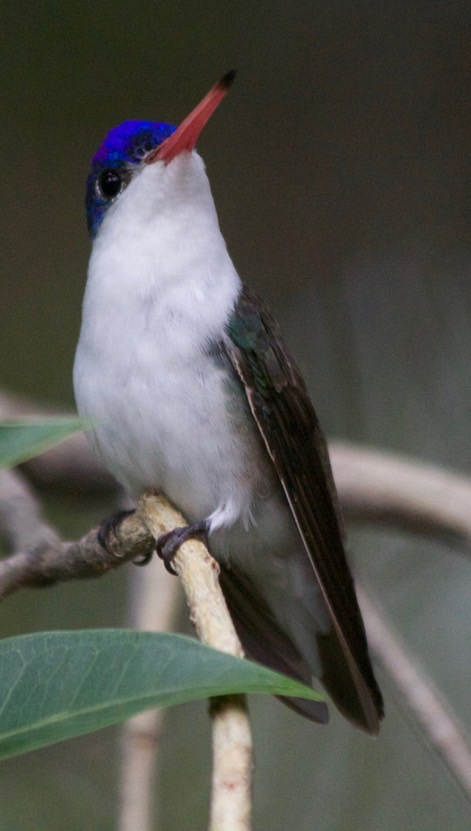
We had a Broad-billed Hummingbird, Cynanthus latirostris, in our yard in Hillsboro, New Mexico, USA during the fall of 2015. It was a distinctive female which was definitely the exotic bird of the month, having wandered from its normal range in southern Arizona. On October 10-11-12, 2015, I had the opportunity to photograph Broad-bills (like the males in the photographs below) at leisure in El Fuerte.
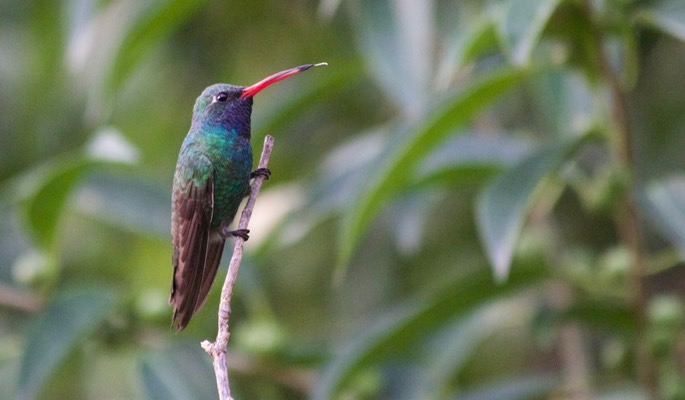
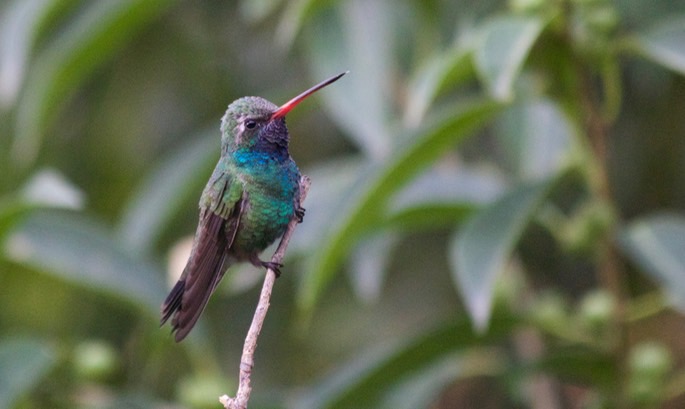
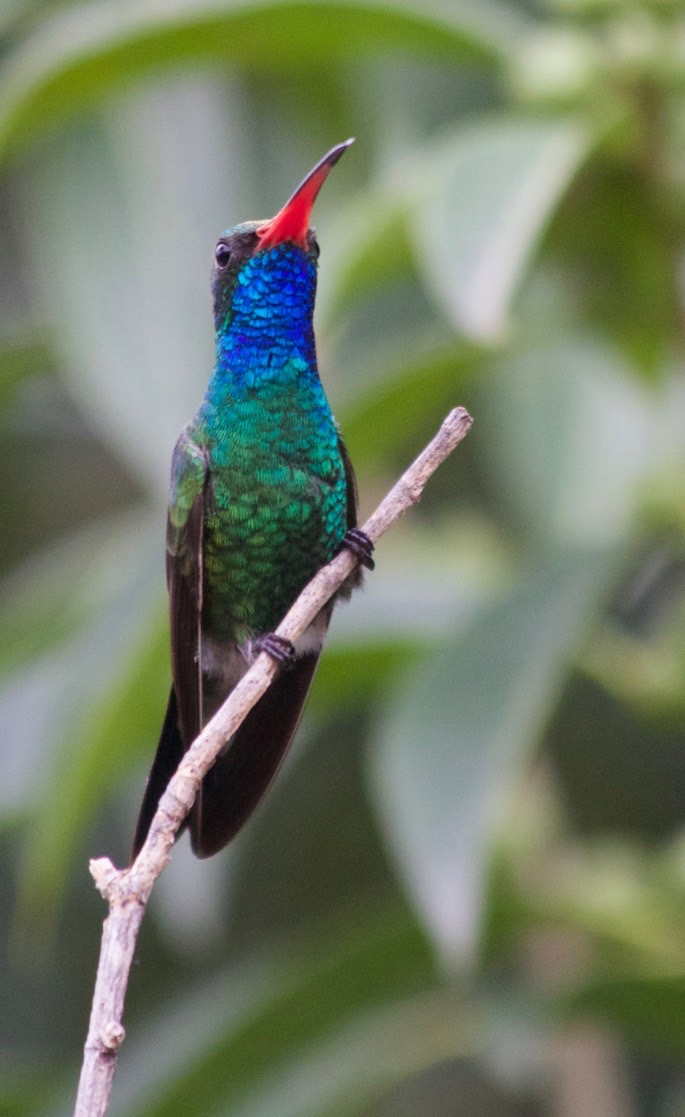
We stayed a full day in El Fuerte, arriving by train the evening before and departing the morning after our day of sightseeing. One of the unexpected treats of the trip was the float trip along the Rio Fuerte on October 11, not unexpected in the sense that the trip was unanticipated but rather unexpected in the sense that it was a treat (photo below). Seems like a very tourist thing to do but it turned out to be rather relaxing and quite enjoyable.
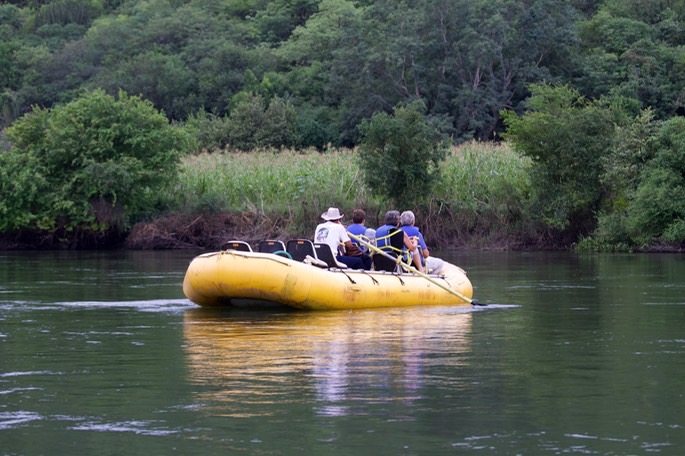
During the float trip I was able to photograph a number of common species including Great-tailed Grackle, Great Blue Heron (photo below), Social Flycatcher (here it is close to the northern border of its range along the Pacific Coast), Osprey, Great Black Hawk (photo below - again near the northern border of its range on the Pacific Coast), Black-bellied Whistling-Duck, Black Vulture, Painted Bunting (photo below), Neotropic Cormorant, Gila Woodpecker, Turkey Vulture, Rufous-bellied Chachalaca, and Muscovy Duck.
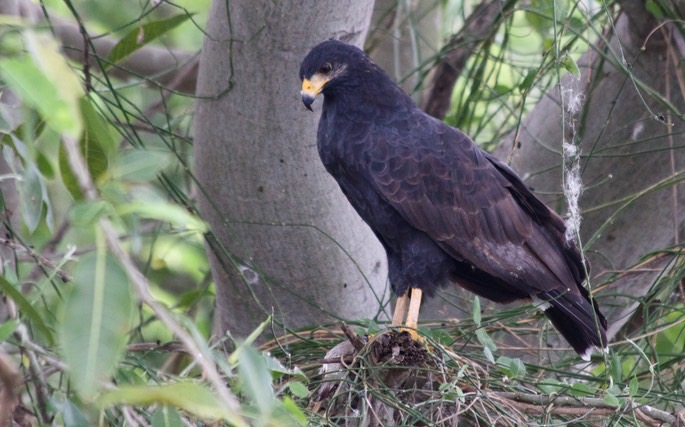
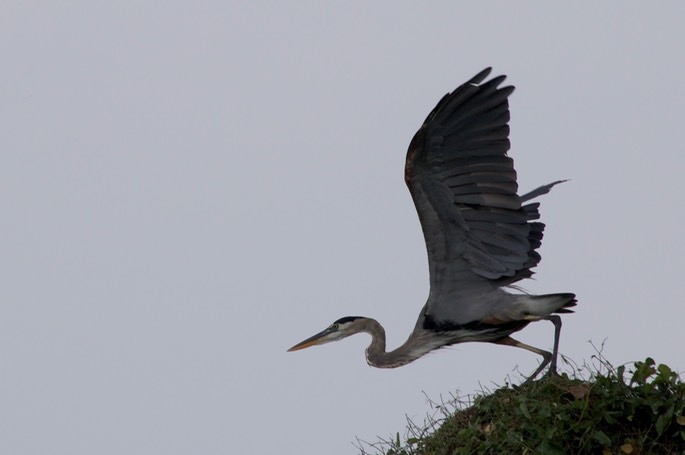
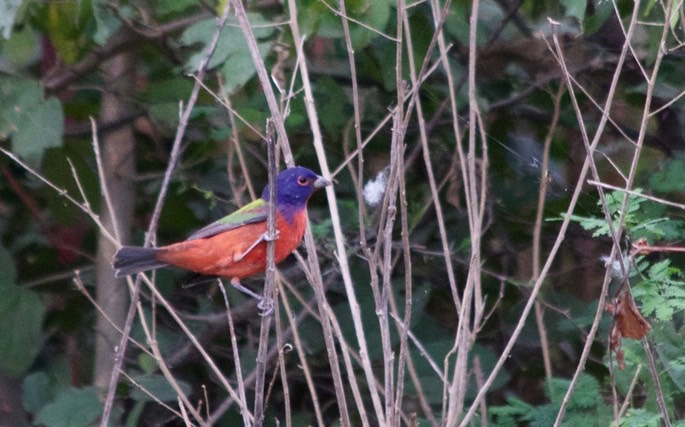
The town of El Fuerte has a population of several thousand, but it was remarkably quiet and laid-back. Walking along the sidewalk, photo below, definitely reminds you that you are not in the United States.
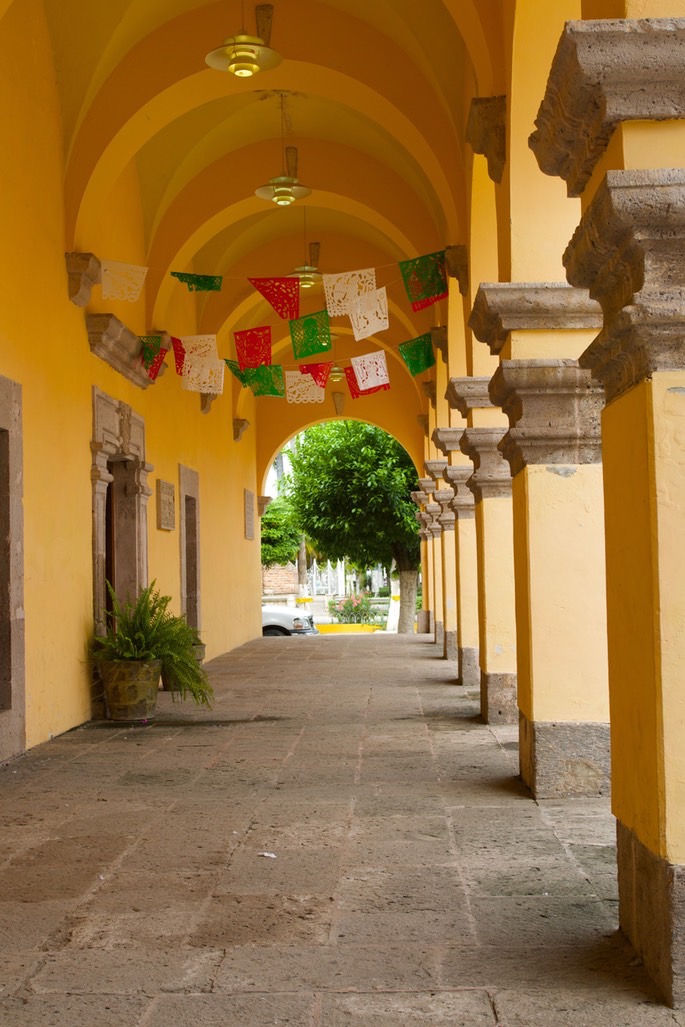
As in almost every Mexican town the central plaza is the place that people congregate. There is usually a central “kiosco”, fountains, and many benches. It is a place to sit back, relax, reflect, and people watch. And as with most plazas, the one in El Fuerte is fronted by a church, photo below, a municipal building, and a few other buildings of some importance in the community.
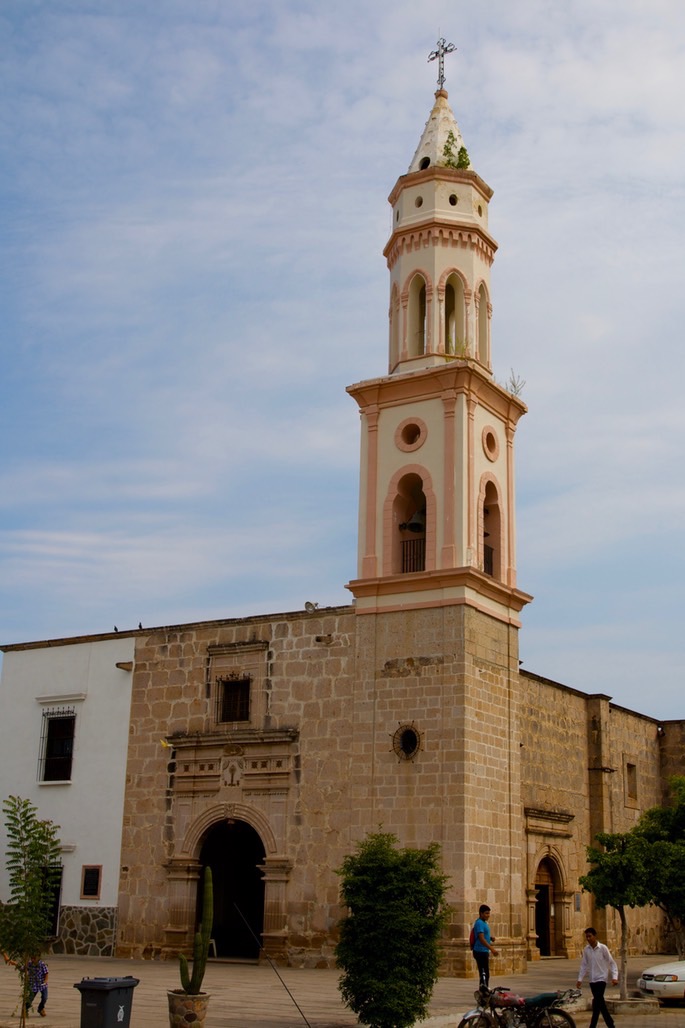
I have seen the Giant Swallowtail species, pictured below, in Panama but not elsewhere in its range. It was a nice treat to get some time to work this specimen. The photograph was taken outside the Fort Museum in town, inside the fort I managed a photograph of a Green Iguana and some cactus, most notably what I think is Stenocereus montanus.
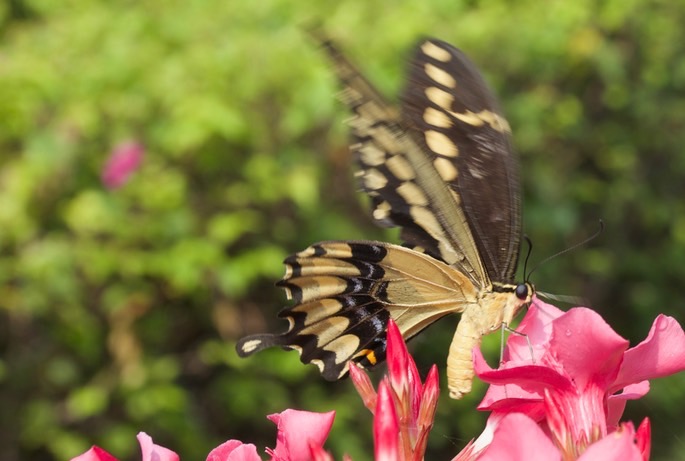
Along the walk to the river, I saw the Winged Calabash, Crescentia alata, pictured below. This is an interesting fruit in that it grows directly from the trunk of a hard wood tree which looks (the trunk) like some species of oak. Pretty exotic looking to me.
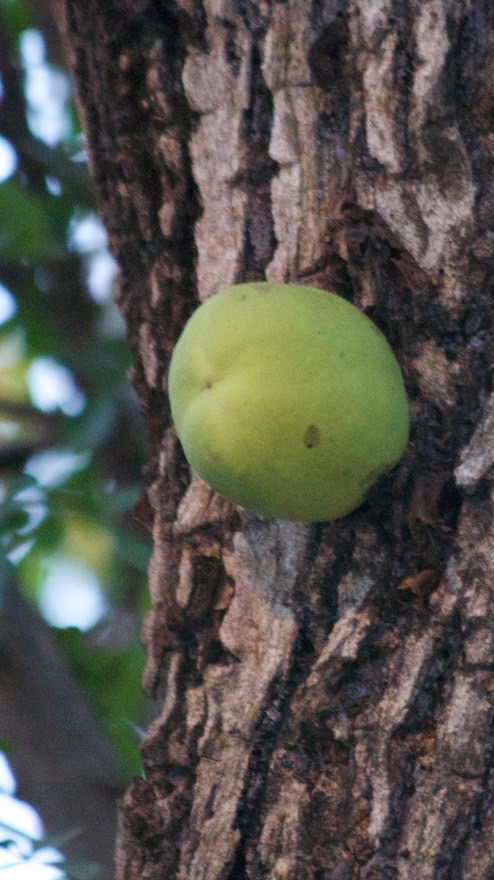
We retraced our steps from El Fuerte, stopping for the night in Creel, Chihuahua. If you travel to the Copper Canyon you will most likely stay in Divisadero or Creel while in the highlands (there are other options). Both of these towns offer the full range of tourist lodging options (from the garish tourist hotels looking out over the canyon to small comfortable rooms where you eat breakfast in the kitchen of the owner). The positioning for prime overlook space by the hotels is not unlike that at the North Rim of the Grand Canyon in Arizona.
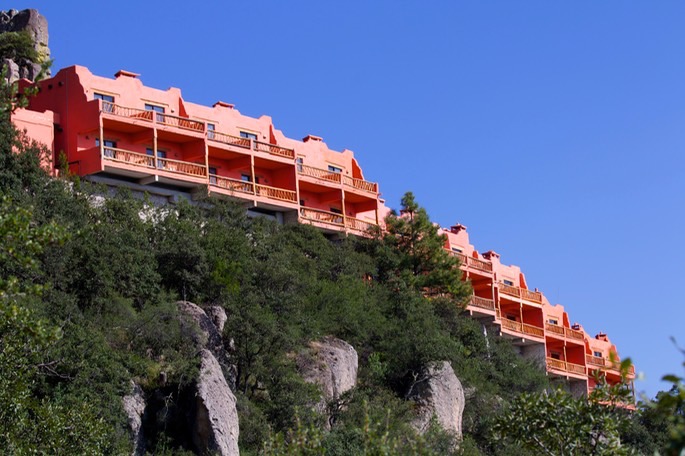
Divisadero is the location for canyon overlooks. A canyon which has been the home of the Rarámuri for centuries. Their homes are tucked here in there in the canyons, many live on the rim as well. The canyon homes, like those pictured below (only a few hundred feet away from the hotel pictured above) often have a photo voltaic panel or two to provide light at night or to charge batteries.
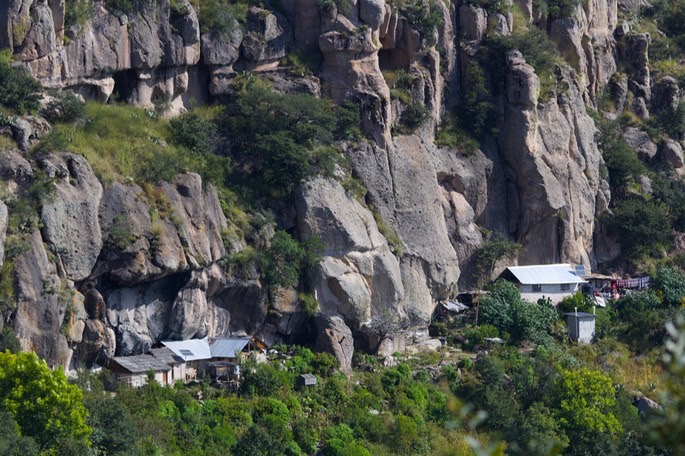
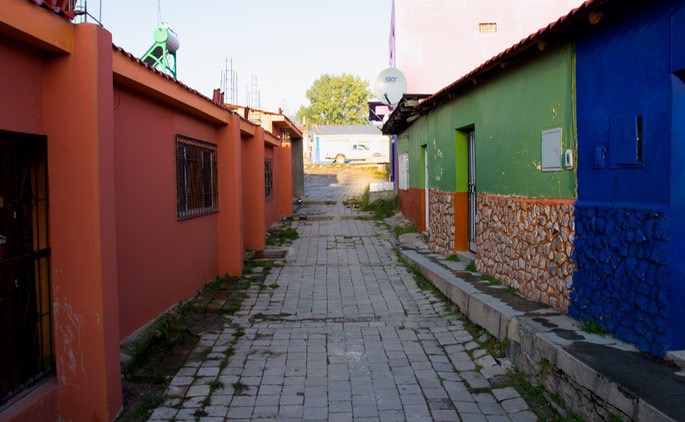
Creel offers the same range of amenities that Divisadero does and is quite colorful in places (like the side street pictured above). The Rarámuri image/mystique is exploited by the people who live in these two communities (which includes Rarámuri). But even in tourist towns life goes on, the Rarámuri women shown below are not tourist attractions, they are simply people going about living their lives.
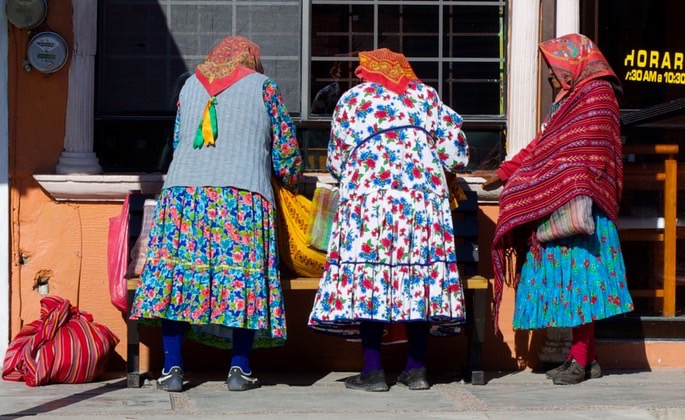
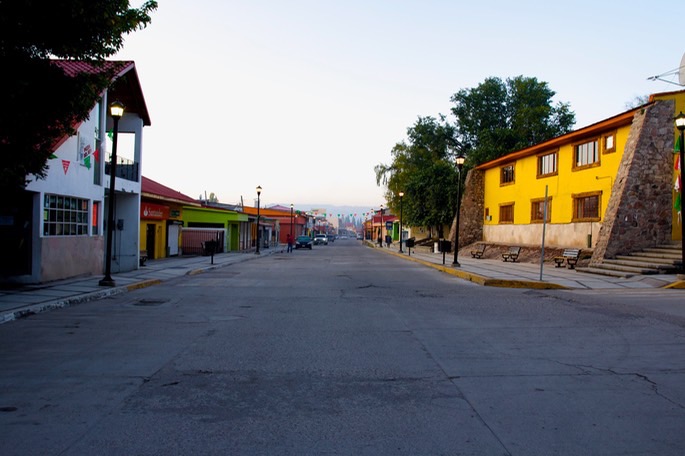
In Creel I had time for an early morning walk which allowed us to see the more eclectic side of the town. The public art here is more whimsical than that of El Fuerte. A day care center has its walls painted appropriately, photo below, and wall art along main street is just as whimsical - perhaps a bit different, see photo below.
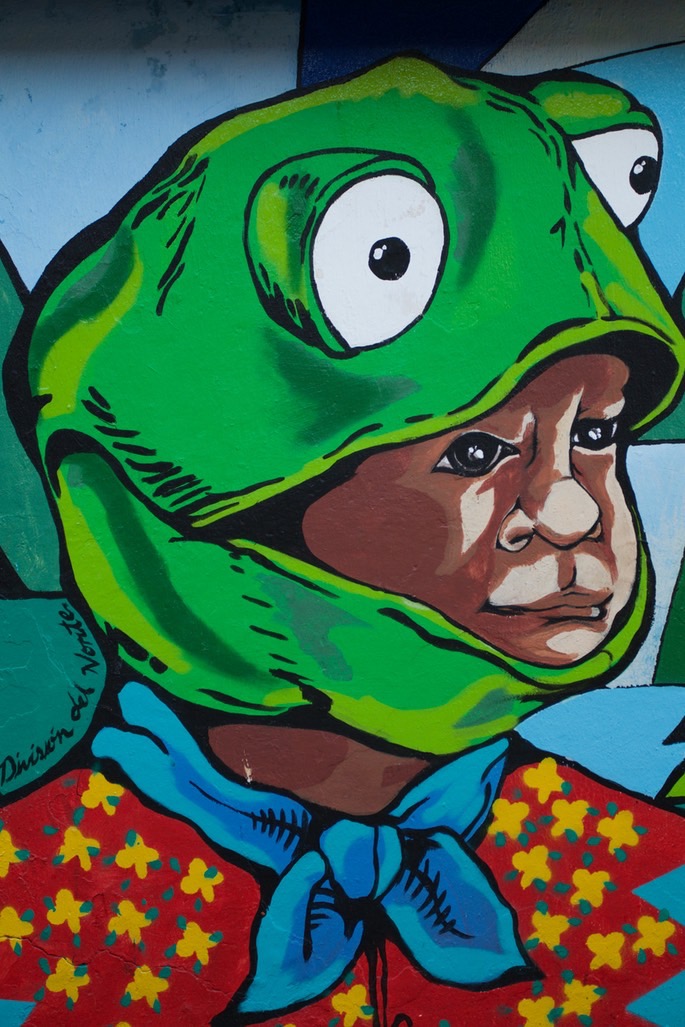
The town begins to bustle around 9 in the morning, guides appear from nowhere hawking their treks, the churches are enjoying late morning visits, and the small museum is showing off its wares to a small cadre of tourists.
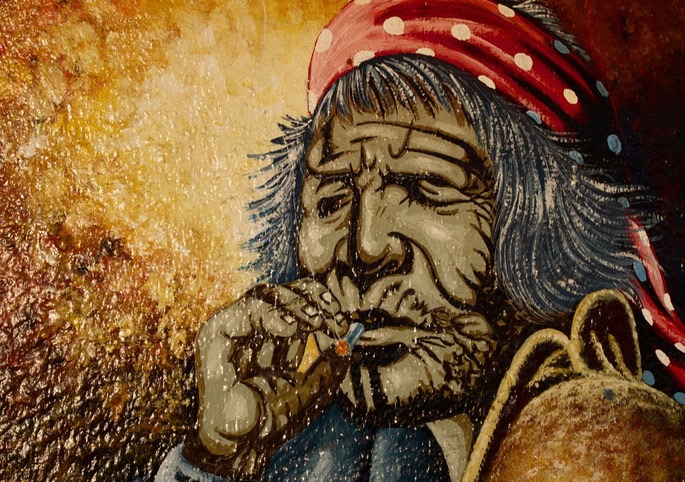
On October 12, I spent some time at Lago de Arareco outside of Creel in Chihuahua, Mexico. The lake (reservoir) is beautiful with great reflections in the late afternoon. Along side the lake there were women peddling their crafts, including this young woman and her child. Where ever the tourists are likely to stop, there are crafts people.
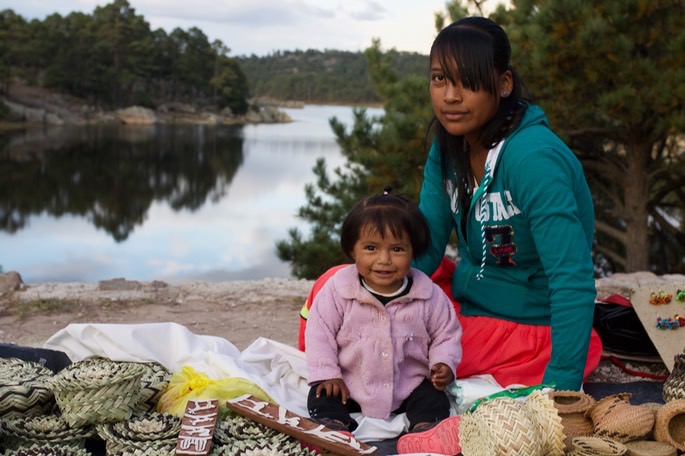
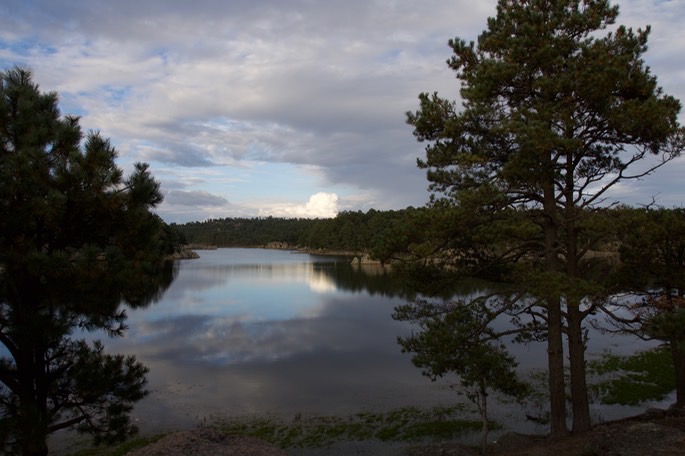
The next day we drove north to Nuevo Casas Grandes where we spent the night and the next morning enjoyed a demonstration of pottery painting by Karla Lopez (video below).
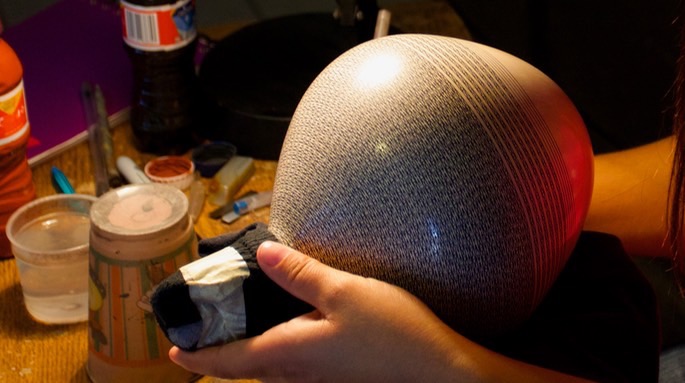
Note the tiered approach that she employs, in the photograph above the work near the neck of the pot is complete, farther down the pot some of the courses have not been completed (she does one color at a time), and toward the bottom the course lines are all that she has completed. She had not done any work near the bottom of the pot when this photograph was taken.
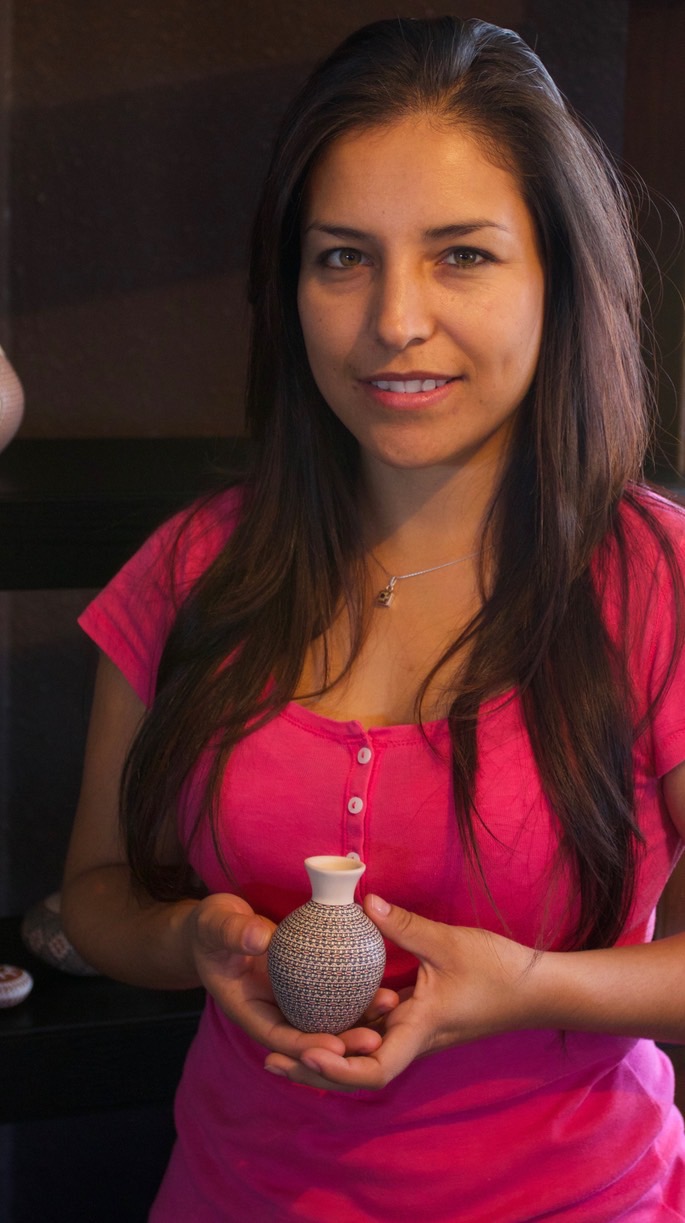
Ms. Lopez, who is pictured above holding a small pot which we purchased, makes her own paints and painting utensils. The paint is made from locally accessed materials and the paint “brushes” are ball-point pens with a single human hair affixed to the end. The hair which is used must never have been bleached or dyed. A single hair is utilized because of the amazingly intricate work which she does (see detail of the picture, below).
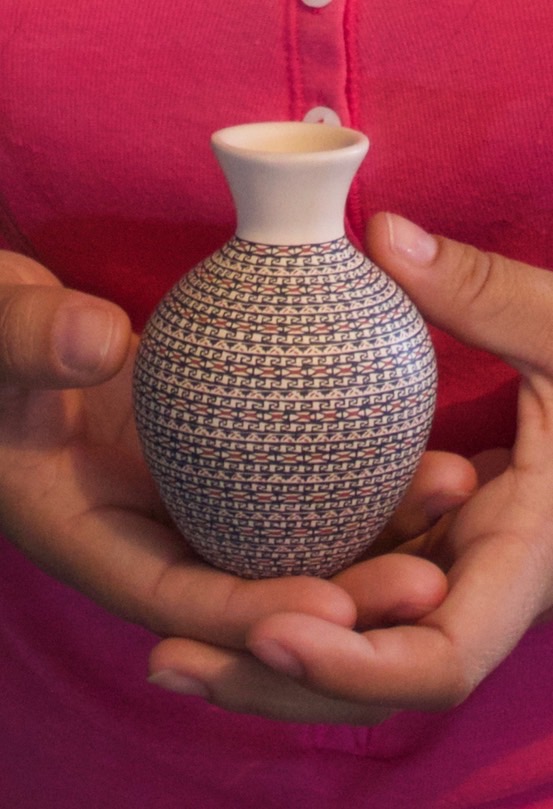
Dinner at the Pink Store and then the drive home finished our “adventure”. Very enjoyable, very interesting.
CUEVA DE LA OLLA, CHIHUAHUA, MEXICO
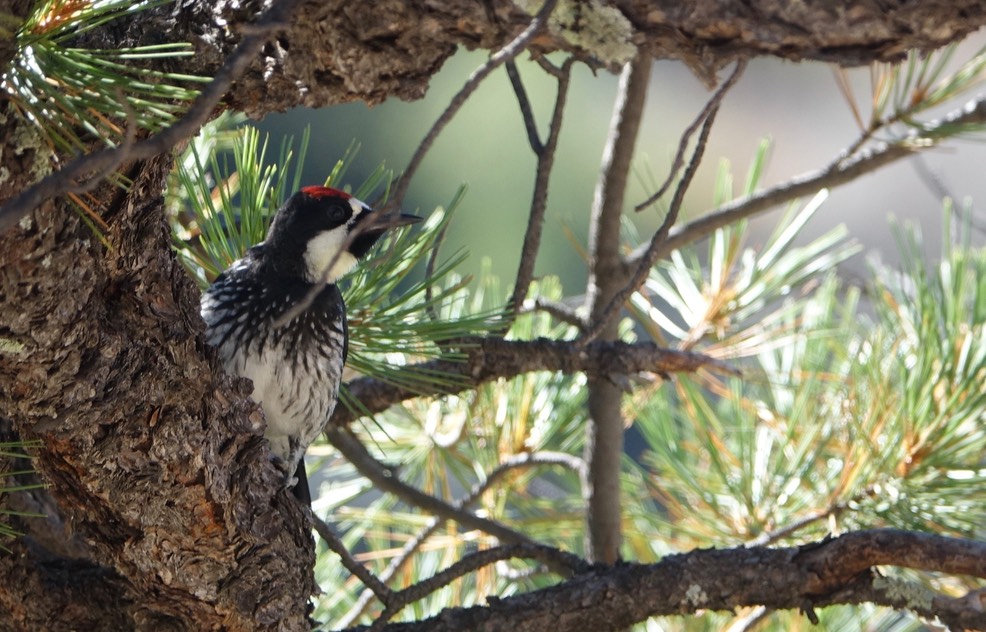
Another website which I maintain, earlypeople.org has photographs taken of the pre-European site which we visited on this trip.
One of the highlights of my visit to Cueva de la Olla, in the Sierra Madre Occidental of Chihuahua, Mexico were the Acorn Woodpeckers, Melanerpes Formicivorus, which were at that site. They were busy laying in stores for the winter, drilling holes in trees and filling each with an acorn - just like the humans who filled the Olla up the hill did.
I have seen lots of Acorn Woodpeckers in my journeys, but these trees and the bird’s activities were exceptional. I was able to make a short video of the Acorn Woodpeckers (handheld).
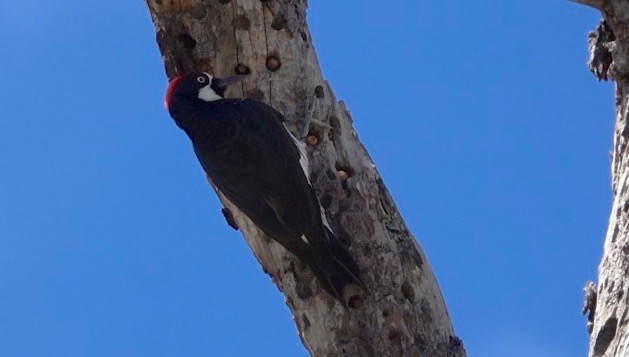
HACIENDA DE SAN DIEGO, CHIHUAHUA, MEXICO
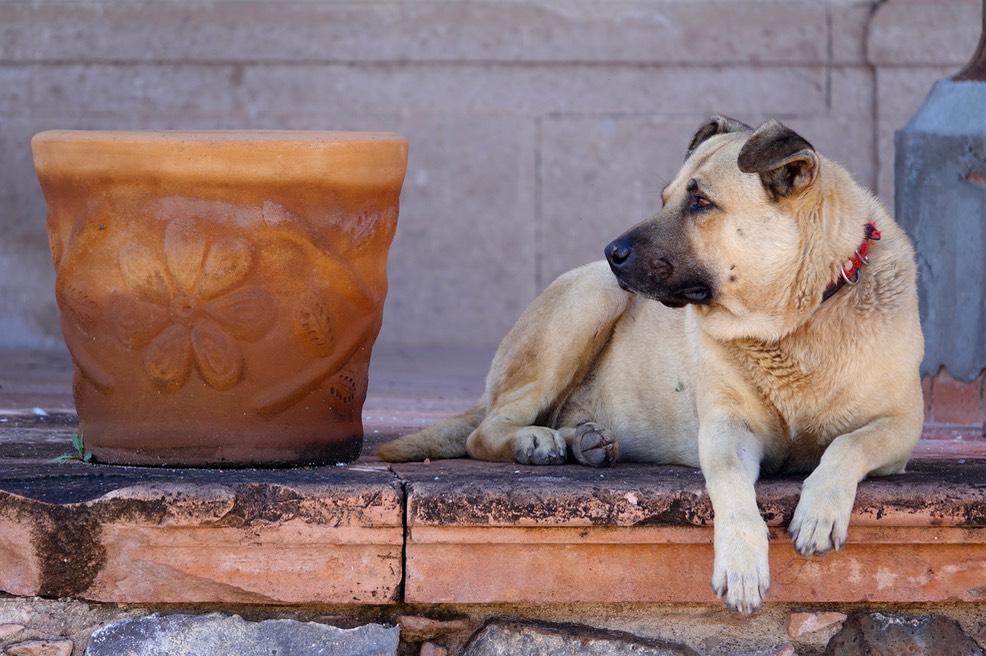
In early October, 2016, I visited Hacienda de San Diego, Chihuahua, Mexico, not far from Mata Ortiz. These “lived-in ruins” were once the property of Luis Terrazaz, one of the better examples of wealth inequity and all that follows. The hacienda was liberated by Pancho Villa in 1923 and is today “inhabited by the descendants of the campesinos who were living on it at the end of the revolution.”
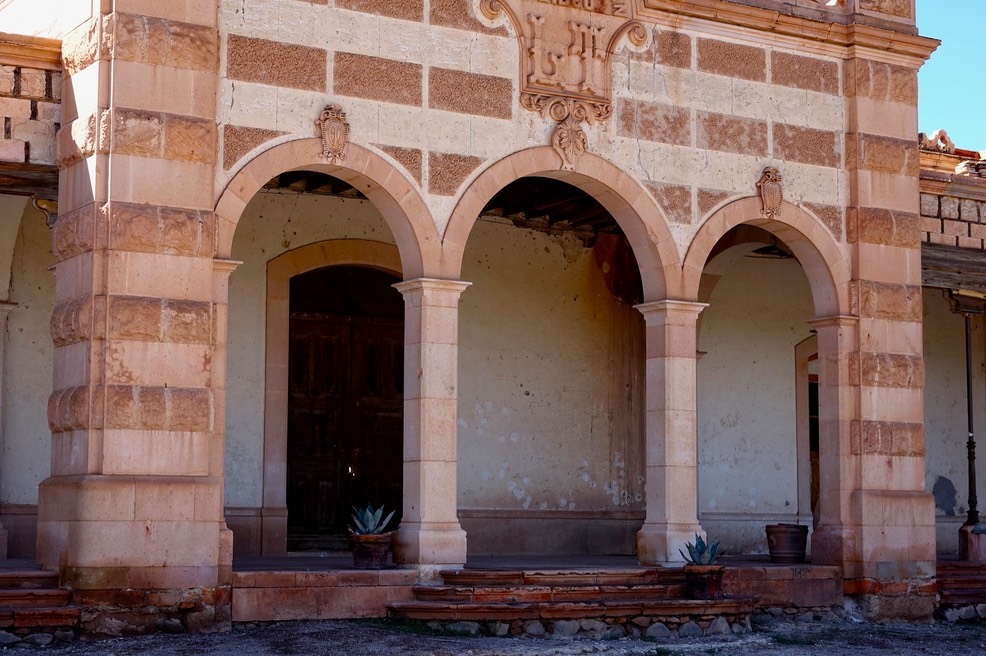
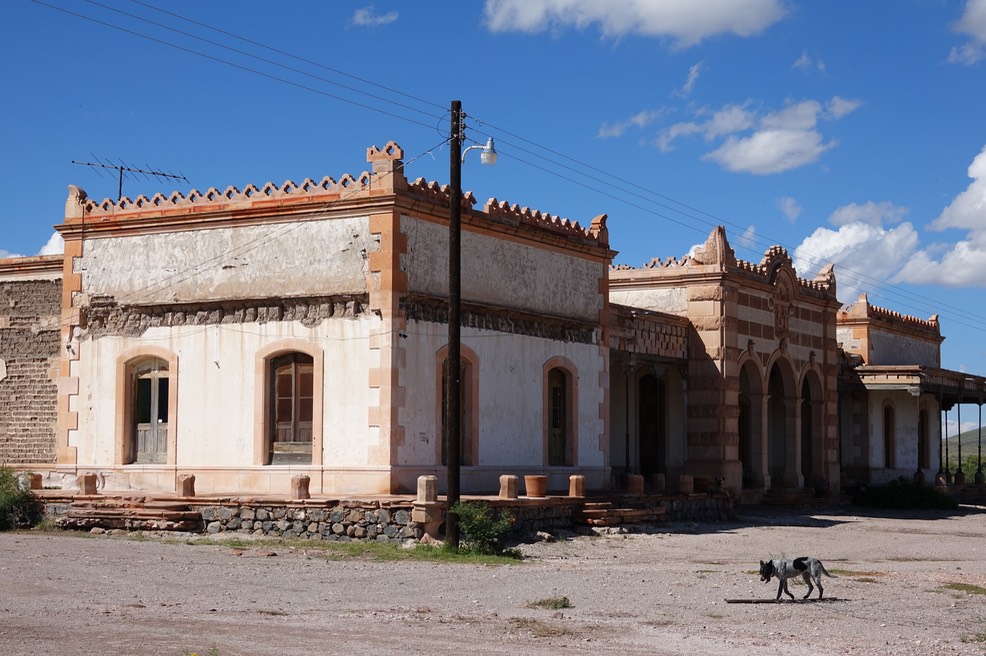

In the area around Nuevo Casas Grandes I generally take time to photograph several bird species (European Starling, American Robin, and White-winged Dove) I could see in my yard in Hillsboro, including the Northern Mockingbird pictured below.
